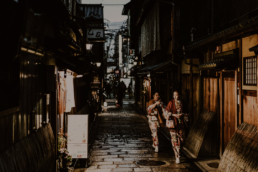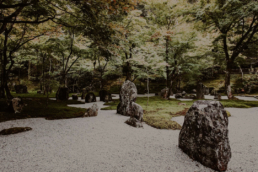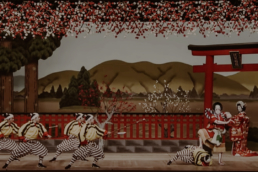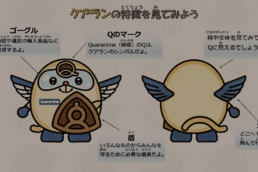Things to do in Quarantine: the best podcasts about Japan
The best Podcast about Japan
written by: Erika | source: TimeOut Tokyo
Let's continue our feature on things to do in quarantine and today we talk to you about some podcasts dedicated to Japan.
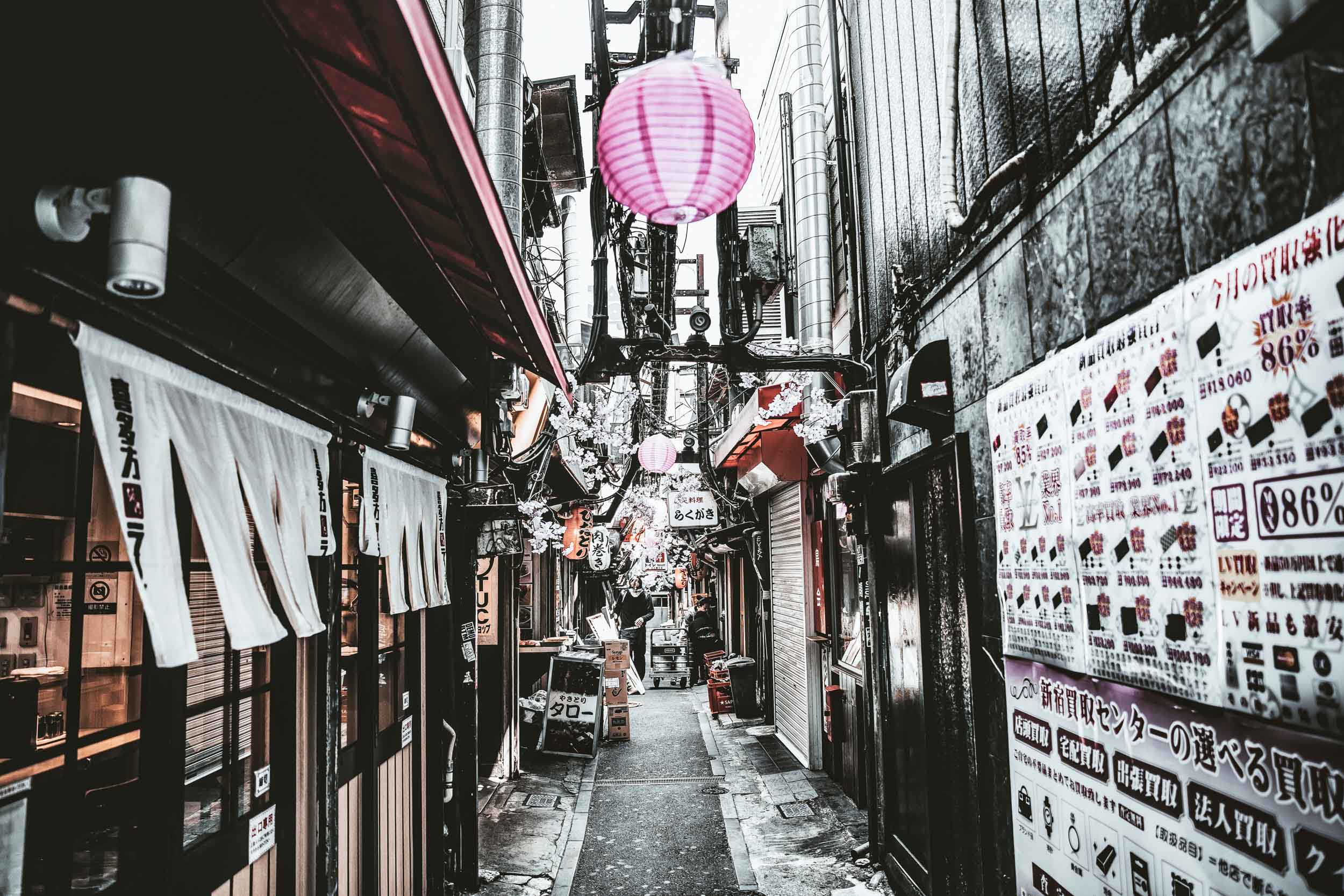
The COVID-19 emergency has practically made it impossible to plan trips for at least another year. However, for all fans of Japanese culture, today we share with you an easy and fun way to learn more about this topic. In fact, there are several podcasts that can fill this void by helping you discover Japan's many facets. In fact, through these audios, it will be possible to discover the many hidden aspects and facets of the Rising Sun without having to face crowded flights and trains.
For example, are you aware of why spider lily flowers are located near Japanese cemeteries and rice fields? Do you know who the pioneering women of the Rising Sun were? These podcasts will not only delve into the food, history, and legends of this country but will also answer questions you didn't even know you had. So, in this moment where we cannot go out and travel, let these podcasts take you on a few minutes journey through Japan.
Japan Eats - Learn about Japanese cuisine

Japan Eats is a podcast of a historic Brooklyn-based radio focused on food. Presented by Akiko Katayama, Japanese cuisine journalist and director of the New York Japanese Culinary Academy. Here we talk about everything from the various trends of Japanese cuisine, to drinks and much more. In one of the recent episodes, Akiko focused even on how to live a vegetarian life in Japan, the art of the Yakitori and more. The podcast already has more than 180 episodes with a new one every week.
Uncanny Japan - All Japanese legends in one podcast
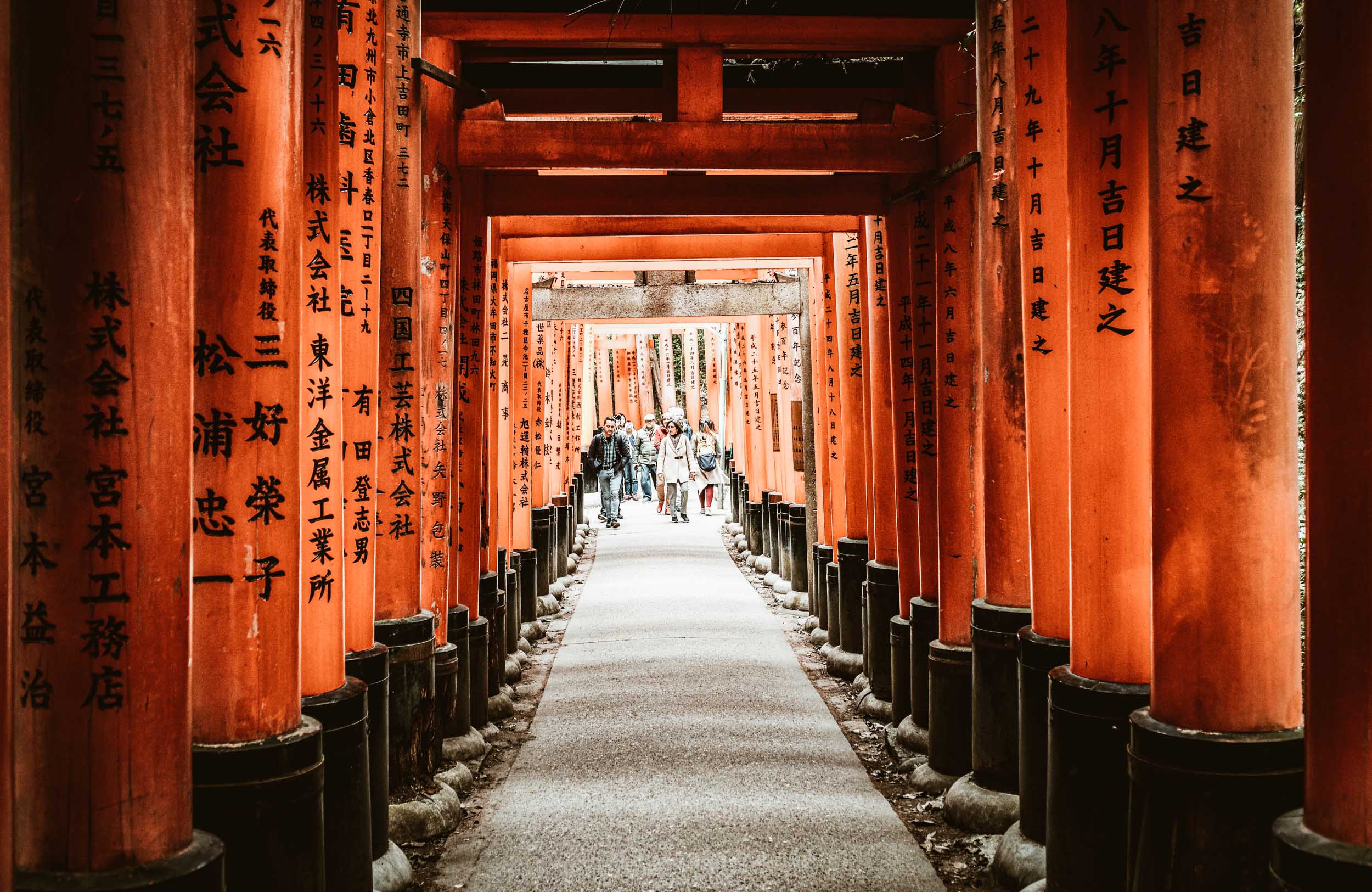
Theresa Matsuura, an American author who has lived half her life in a fishing village in Japan, presents Uncanny Japan. In this podcast, Matsuura talks about those parts of Japanese culture that are often invisible or inaccessible to anyone who does not speak the language. At the same time, it offers an insight into local customs, legends, folklore and superstitions of the rising sun. Ready to immerse yourself in the imaginative and sometimes even spooky Japanese fairy tales?
History of Japan - Learn Japanese history
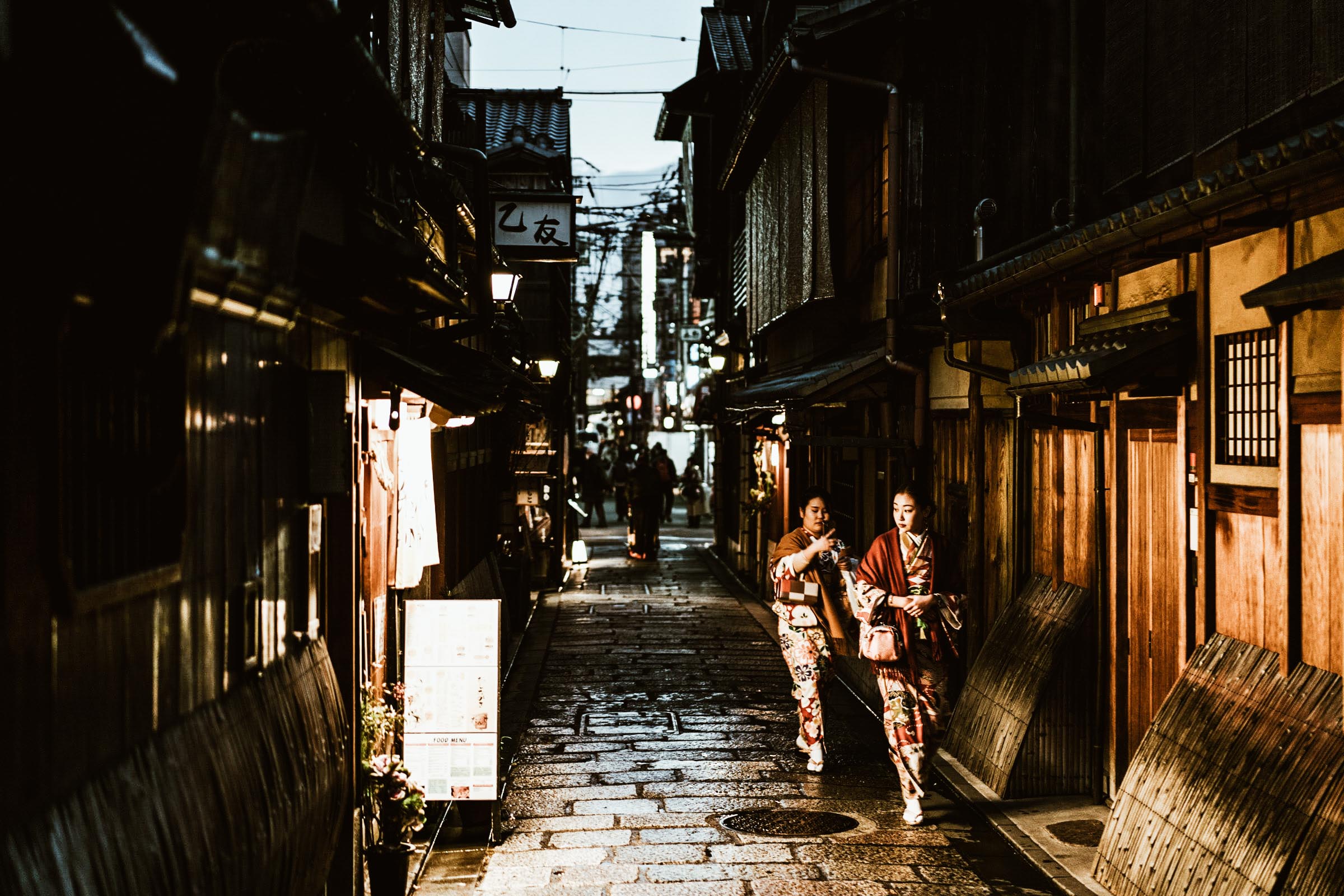
Isaac Meyer, a teacher with a PhD specializing in modern Japan, leaves nothing hidden in this historical podcast. From ancient to modern Japan, passing through poets, political scandals, economic booms, samurai, geishas and much more. Indeed, this podcast is an in-depth look through the history of the rising sun in each episode. Informative but also fascinating to hear, History of Japan has more than 300 episodes that can keep you company in this lockdown period.
Voices in Japan - Life in Japan
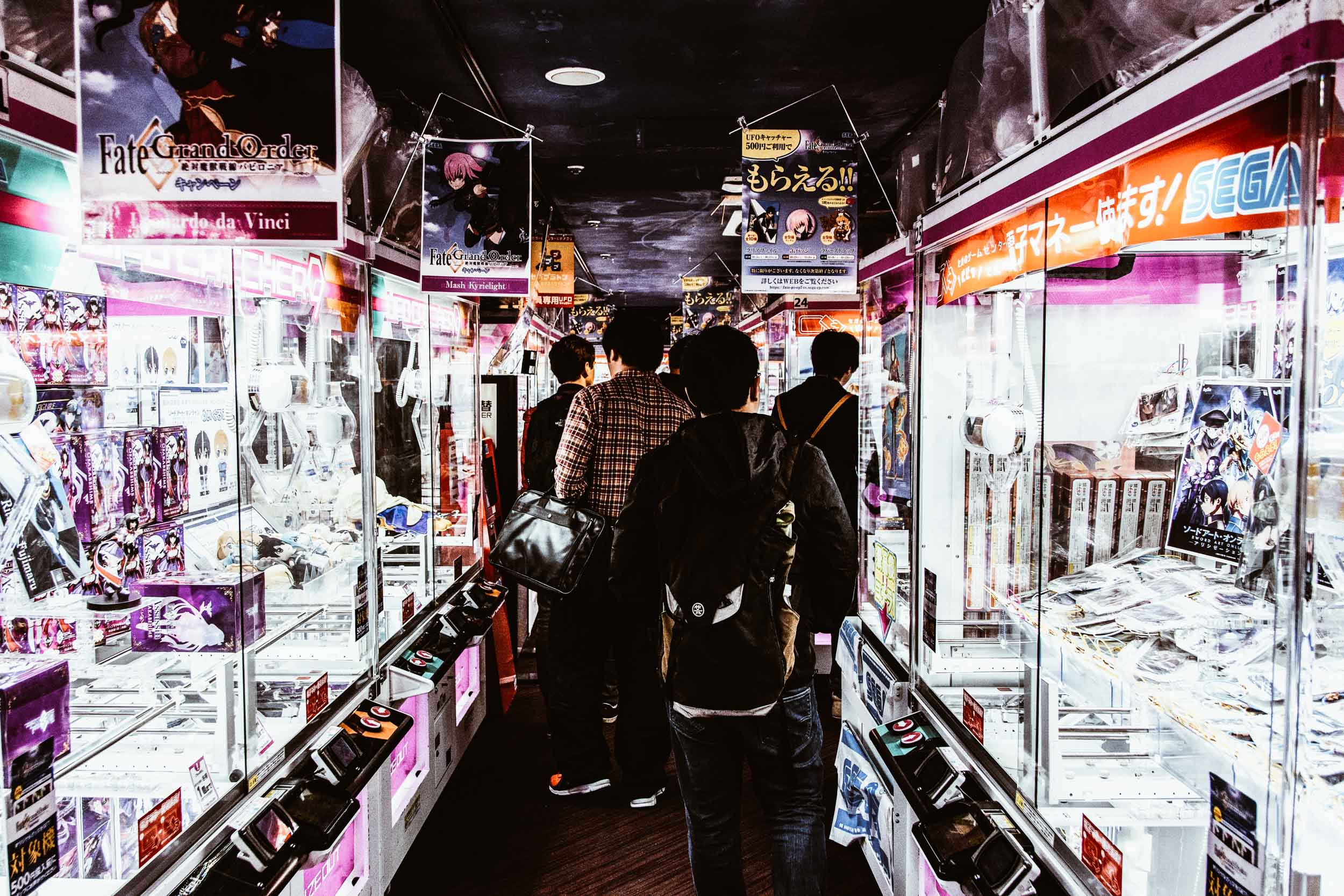
Ben and Burke, expats in Japan who live in Hokkaido, share their life experience in the land of the Rising Sun. The podcast Voices in Japan talks about their life from work to studying the Japanese language, and also learning the customs of the nation and much more. The weekly episodes include general topics related to living in Japan such as a look at the Japanese health system. In addition, the talk also revolves around the love of technology, Sumo and the potential benefits of the Japanese diet. Whether you live in Japan or just want to hear more about life experiences, this podcast is ready for you.
Sake on Air - All about the world of Sake
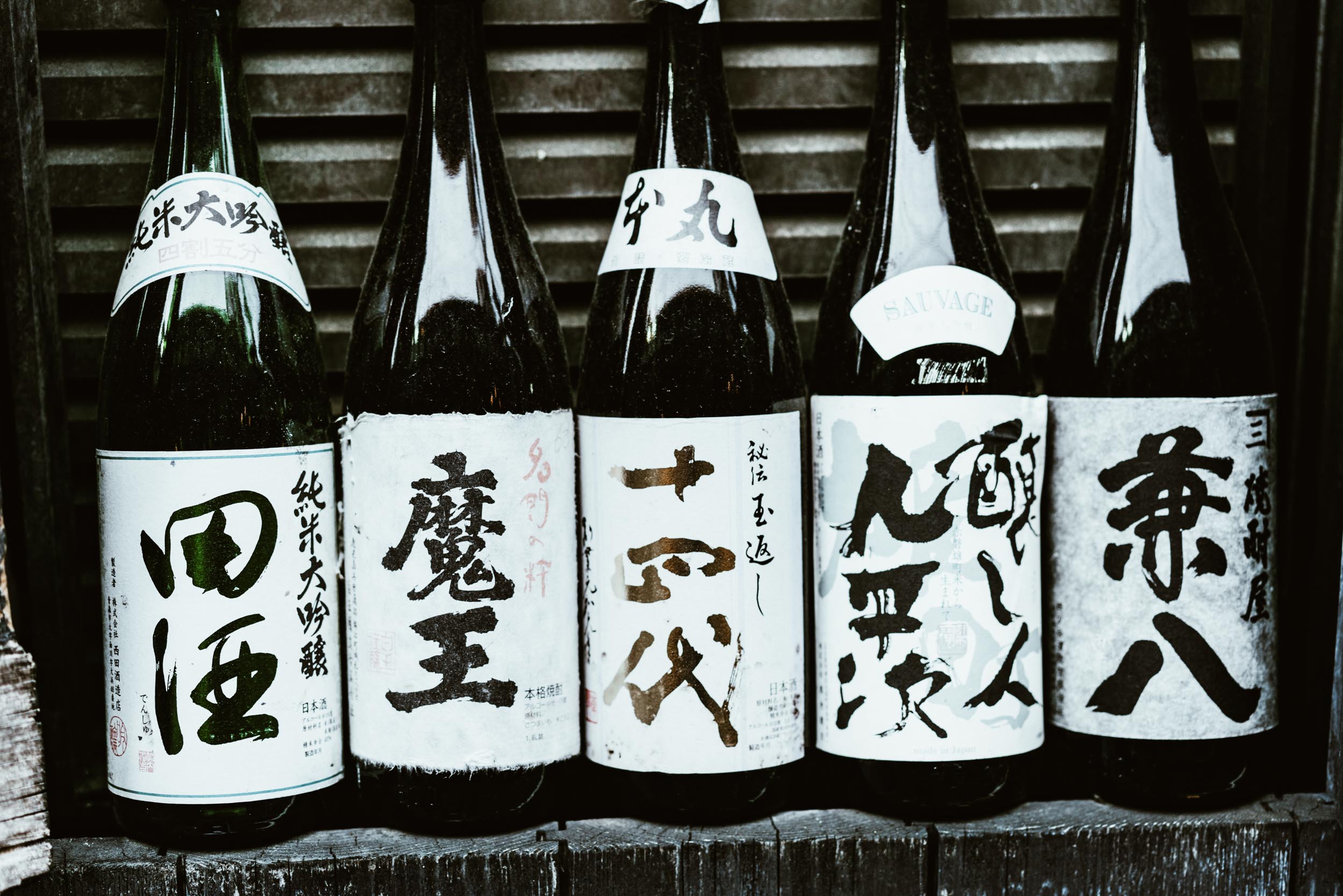
For all fans of Sake and shochu, Sake on Air is the podcast made for you. The experts of this famous Japanese drink share their knowledge in each episode, inviting us to this virtual dinner. In fact, in each episode, we find a different topic such as new trends in manufacturing, stories from producers but not just this. We can also learn about the various flavors, the difference between the rice used and how to combine the various flavors of Sake with food. So, if you are also curious, arm yourself with a glass of wine or your favorite sake and listen to this podcast!
Things to do in Quarantine: create an edible Zen garden
Creating an edible Zen garden
written by: Erika
The world is still in lockdown and in the absence of things to do we can give ourselves crazy joy in the kitchen, that's why today we share a new idea with you, create an edible zen garden!
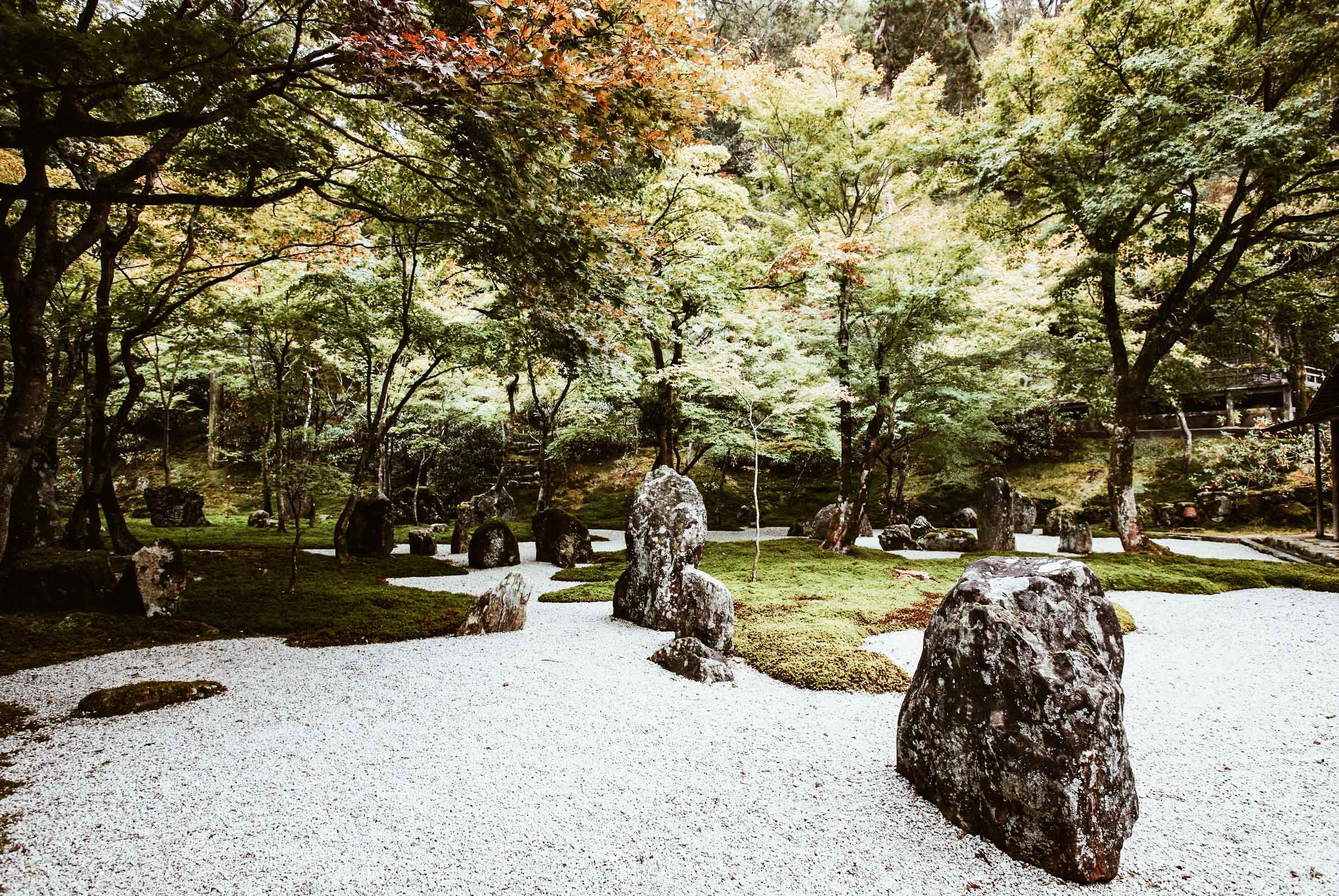
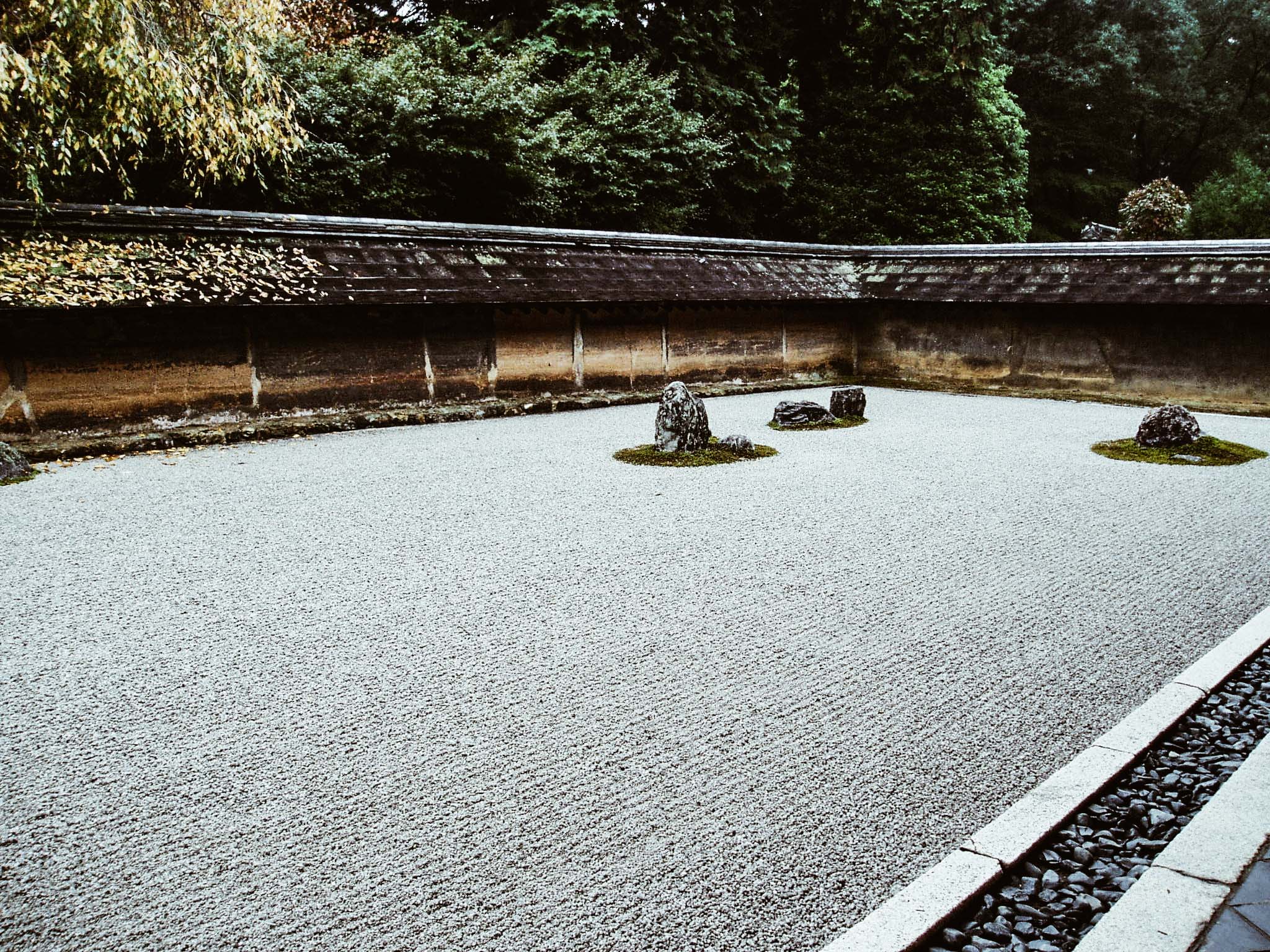
In Japan there are mixes made specifically to share this experience with the whole family, even together with the little ones. Instead, today we offer you a variant to be created directly at your home with ingredients easily available in any supermarket.
In every self-respecting Zen garden we find rocks, sand or gravel, greenery and some stones to be able to cross it without disturbing its tranquility. By following our instructions, you can recreate exactly this atmosphere.
Step 1: The Rocks
As you well know, a fundamental ornament of the Zen garden are these huge stones present inside. In our recipe, we are going to create stones with simple brownies.
Brownies - Ingredients
|
|
Brownies are easy to make and won't take too long, so start chopping the chocolate coarsely and melt it in a water bath. When it is almost melted, add the soft butter cut into small pieces.
Stir thoroughly until everything melts in a water bath and then remove it from the heat. Then let it cool, stirring it occasionally.
While you wait for the chocolate to cool, take the hazelnuts and let them toast in a preheated oven at 180° for about 7/8 minutes. Once out of the oven, let them cool in order not to burn you, then chop them coarsely and keep them aside.


Let's move on to the next step, put the eggs in a bowl and begin to beat them and then add the sugar. It is not necessary to whip the mixture, but continue to beat only until the sugar is well dissolved. At this point, add a pinch of salt and let it dissolve too. Still with the whips in action, slowly add the chocolate and butter mixture that will have cooled down by now.
As soon as everything is mixed, stop whipping. Take a narrow mesh strainer and sift through the flour. Then, mix everything with a spatula until the flour is absorbed uniformly. Then take the chopped hazelnuts and mix everything.
After having greased and lined a baking sheet, pour the dough inside by leveling it with a spatula so that it is evenly distributed. Bake in a static and preheated oven at 180° for 25 minutes, then take out of the oven and leave to cool. At this point, with a knife, you can create the rock-shaped pieces for your zen garden!
Step 2: The gravel
Another fundamental element for a Zen garden is gravel, a symbol of tranquility and purity. But let's see our suggestions to create this element!
Almond crumble - Ingredients
|
|
With the crumble, we are going to create most of our zen garden so we start by preheating the oven to 180°. As the oven heats up, we take the almonds and start peeling them. Then, we take a baking sheet and place it on the baking tin.
Next, we toast the almonds for 7/8 minutes inside the oven, then let them cool and finely chop them with a knife. Afterward, we take the 0 flour and mix the chopped almonds inside with the brown sugar. When we have an amalgamated mixture, we take the butter and cut it into cubes and then add it inside the same mixture together with the vanilla seeds.

Work the whole mixture with your fingertips until a grainy mixture is obtained. Alternatively, it is also possible to prepare all this with a mixer but the crumbs that we are going to get will be coarser.
At this point, you should have obtained a mixture that is somewhat reminiscent of shortcrust pastry. Leave it to rest in the refrigerator for at least 30 minutes, then spread it on the oven paper and then bake it for about 15 minutes at 180° in a preheated oven. Once the cooking is complete, let it cool and then crumble it inside your dish ready for presentation. Cover everything with icing sugar to recreate the effect of the white gravel typical of Zen gardens.
Step 3: Green
Japan is one of the greenest lands and all major Japanese cities are full of large parks. Of course, even in our edible zen garden you can't miss a green area.
Matcha Chiffon Cake - Ingredients
|
|
This is the most difficult part of our recipe, but don't be afraid, if you follow the instructions step by step you will be able to complete this part too. Let's start by preheating the static oven to 150° and preparing an aluminum cake mold. Make sure this mold is tall enough as our chiffon cake will rise a lot.
Separate the yolks from the egg whites and in a clean bowl add the egg whites with the cream of tartar, whipping the mixture until you get firm crests.



In another bowl sift the green tea, the flour, the baking powder, salt and sugar and with a metal whisk by hand make sure that everything mixes well. In a separate bowl, combine the water, oil and vanilla extract. Once you have everything well mixed, pour the yolks and the mixture with the water and oil into the bowl with the flour and green tea.
Mix everything with the metal whisk by hand until a uniform mixture is obtained. Then transfer 1/4 of the whipped egg whites into your dough and mix with a spatula to lighten all the contents. Whipped egg whites should always be mixed with a movement that starts from the bottom so that they do not lose the whipping. Next, incorporate the rest of the egg whites into three other additions.



When you have the mixture well amalgamated, pour the mixture into the pan that should not be buttered or floured. Put everything in a preheated oven for about 1 hour and 15 minutes and when cooked, remove the pan and turn it immediately upside down.

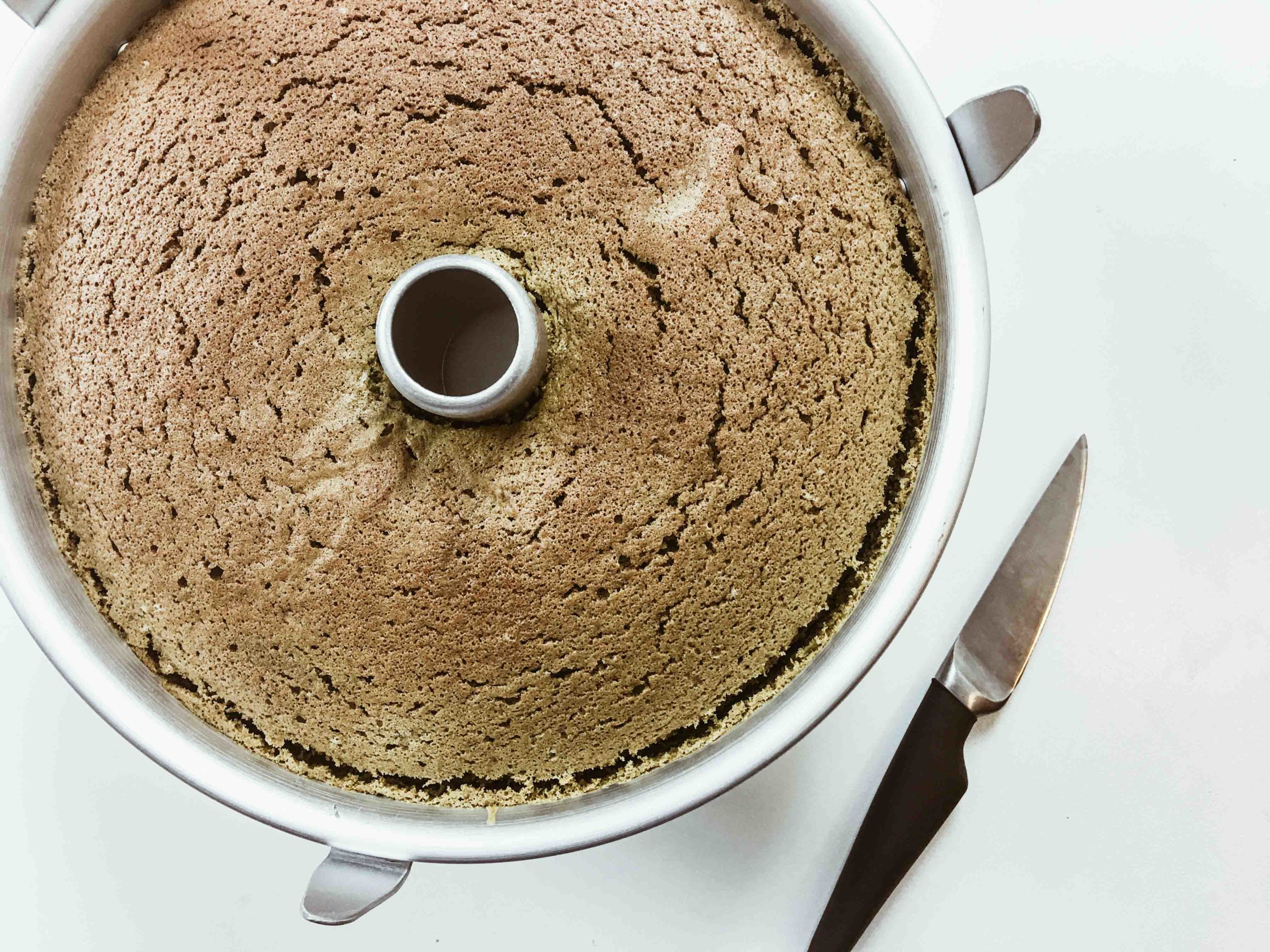
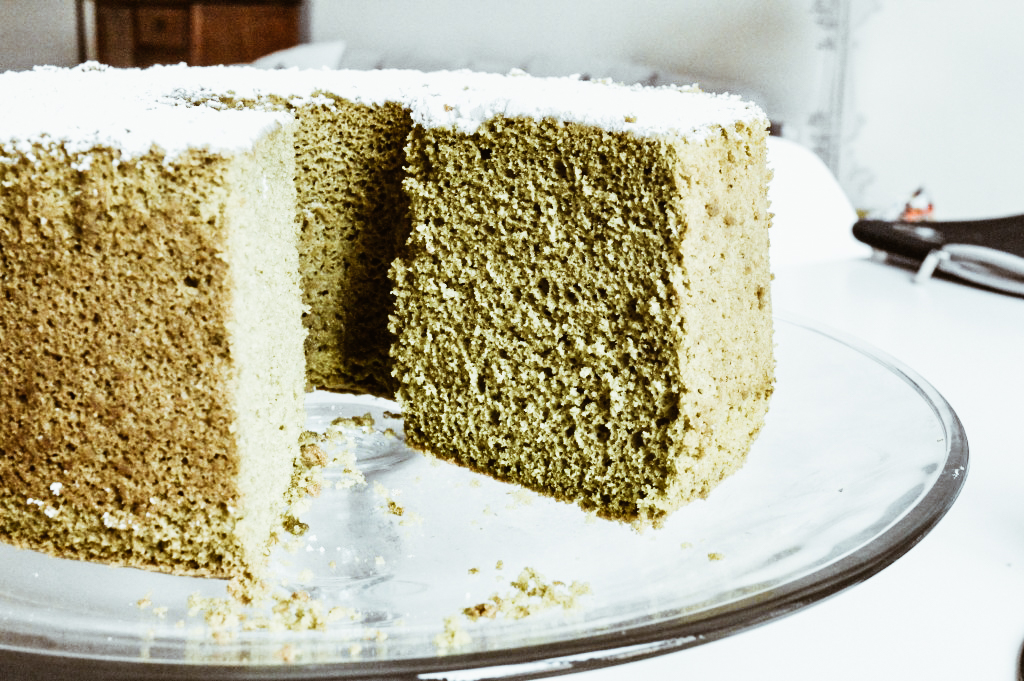
Let it cool slightly and then remove the cake from the pan. Once ready, you can cut thin slices to decorate your Zen garden.
Step 4: The Pathway
In some Zen gardens, we also find flat stones that allow us to cross the garden leaving it undisturbed. Here is how we will create them.
Mini Meringues - Ingredients
|
The trick in preparing the meringues is all in the eggs, in fact, the trick is to have fresh eggs and at room temperature. Then separate the yolks from the whites, pouring them into a large enough bowl. In this case, we won't use the yolks, but do not waste them and keep them aside, you will surely find a way to use them in the kitchen.
Make sure there are no residual yolks inside the bowl otherwise they will not mount. Then take the electric whips and operate them at medium speed. Alternatively, you can also carry out this process inside a planetary mixer, if available. While you are whipping the eggs, gradually pour the sugar into the bowl together with a few drops of lemon juice.
To create perfect meringues, the egg whites will have to be whipped very firmly and to understand if you are doing everything correctly there are two tests. The first is the visual one, in fact, the mixture must always be shiny and frothy. You can do the second test with the whips. In fact, detaching the latter you should notice a tuft of egg white with the tip. Everything must be similar to a sort of frothy and shiny cloud.


Prepare a baking tray with a baking sheet and then transfer all the mixture into a sac-à-poche with a round hole nozzle. Form small disks from 2 to 4 cm in diameter (this depends on the size of your final zen garden) well spaced apart. Then put them in the static oven preheated to 75° for about 2 hours.
Your meringues will have to dry slowly in the oven and as soon as they are completely dry, take the pan out of the oven and let it cool completely before removing it from the pan.
Step 5: Serving the Zen Garden
Now you can let your imagination run wild and build your edible zen garden according to your preferences! In case you want some ideas, below you will find some reference images. If you decide to try this recipe, send us your photos in the comments below or on our social pages, we are curious to see your creations!
[ngg src="galleries" ids="3" display="basic_thumbnail" thumbnail_crop="0"]Sources: pandispagna.net, giallozafferano.it, Pinterest, Wikipedia
Japan Italy: "An Italian in Japan" the serie - Saracchan
Saracchan e la sua esperienza
Written by: Erika
A few months ago we launched the column "An Italian in Japan" where we interview our compatriots in the land of the rising sun. Few succeed in realizing the dream of going to live in Japan and we want to share with you the experiences of those who have succeeded! Today we introduce you to Sara, another very Italian girl who lives and works in Japan!

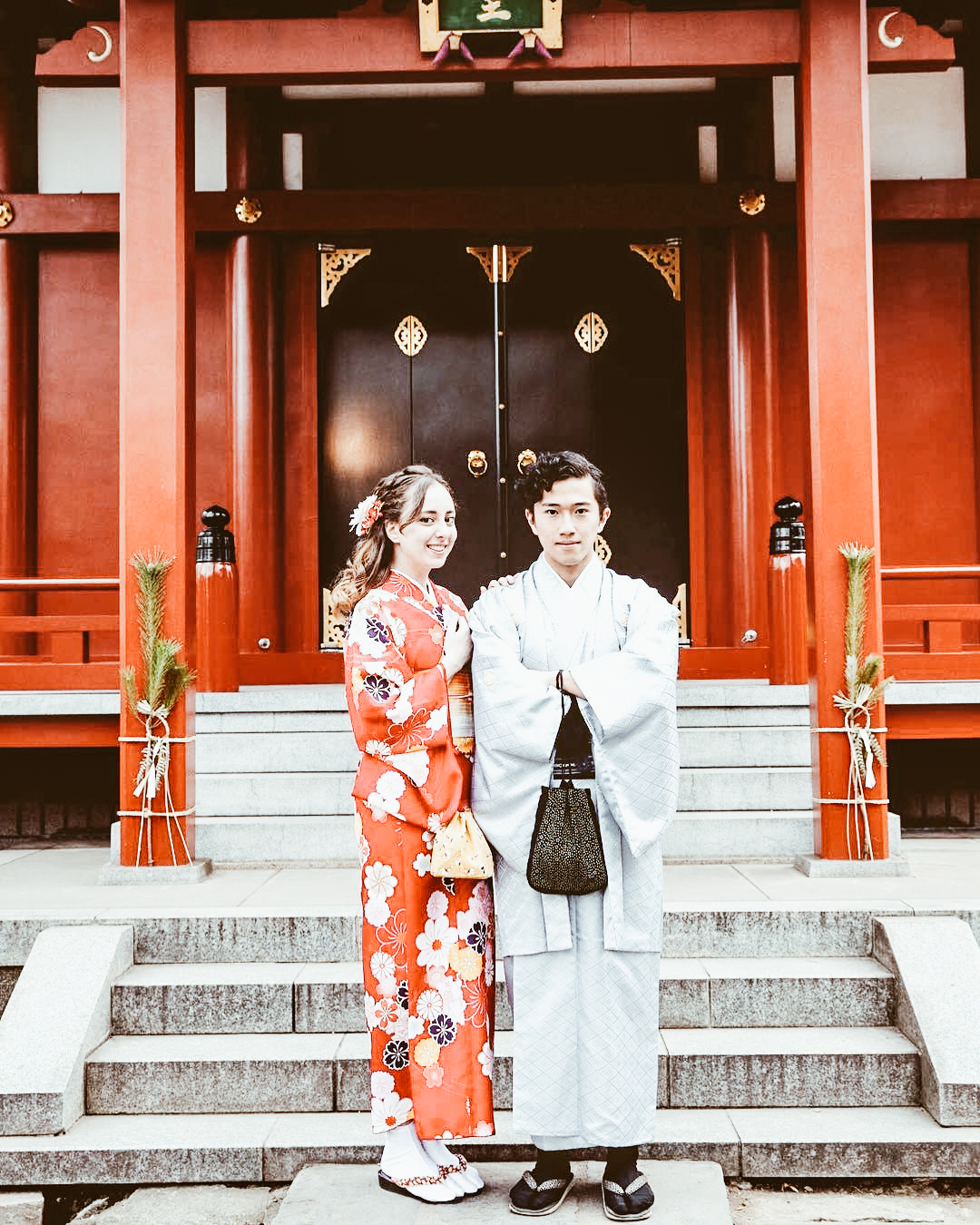
JIB: Tell us briefly about who you are
Saracchan: Good morning everyone! My name is Sara, I am 25 years old and I come from Milan, where I have lived for most of my life. I love playing the piano, studying Japanese, singing karaoke and doing hanami, meaning looking at cherry blossoms in full bloom. About three years ago, I embarked on an adventure that completely changed my life: I moved to Japan, where I still live, work and attend university.
Before moving to the land of the Rising Sun, I opened a Facebook page called Saracchan’s Japan, where I publish photos and videos for fans of this beautiful country. I also manage a personal profile on Instagram where I publish my daily adventures in Tokyo.
JIB: How did your passion for Japan come about?
Saracchan: My passion for Japan was born in a somewhat obvious way, so to speak, given that many people have recently approached this country in this way.
Perhaps some of you will remember that ten years ago, on MTV, some anime episodes were aired, including InuYasha. That day, after returning from high school, I decided to turn on channel 8 instead of watching the usual Simpson's cartoon. In that moment, I fell in love with this particular anime that told the tradition and history of Japan in a picturesque way. From that day on I started looking for more information on the internet and I was introduced to the world of manga and anime, which I began to read and watch assiduously. Through them, I created an image of Japan that made me dream, nevertheless for the language that sounded so fascinating and melodious. After that, after the anime and manga period, I approached culture and traditions and started studying the language on my own.


JIB: How long have you lived in Japan and why did you want to move to this country?
Saracchan: Considering all my experiences in Japan, I can say that I have lived in this wonderful country for about three and a half years. Although moving was a difficult journey, I can proudly say that I made my big dream come true. Note that by "difficult" I do not mean for bureaucratic issues, but precisely for the decision that led me to take this huge step.
In fact, after finishing high school I wanted to go absolutely to Tokyo to study Japanese but, for various reasons, I was "forced" to enroll in the biology faculty of Milan. Here I didn't feel fulfilled, I wasn't convinced that that was my way. One day, by chance, I happened to attend the presentation of the GoGoNihon agency in Milan, which opened the way for Japan to me. In fact, some time and some savings later, I enrolled in a language school in Takadanobaba, Tokyo, where I studied for one year, the most beautiful of my life. After that, after finishing my studies, I reluctantly returned to Milan, and I enrolled in the university of foreign languages (including Japanese) in Bergamo. However, my heart now belonged to Japan and so the following year I enrolled in the Faculty of Business Economics at a university in Saitama, near Tokyo, where I am still studying.
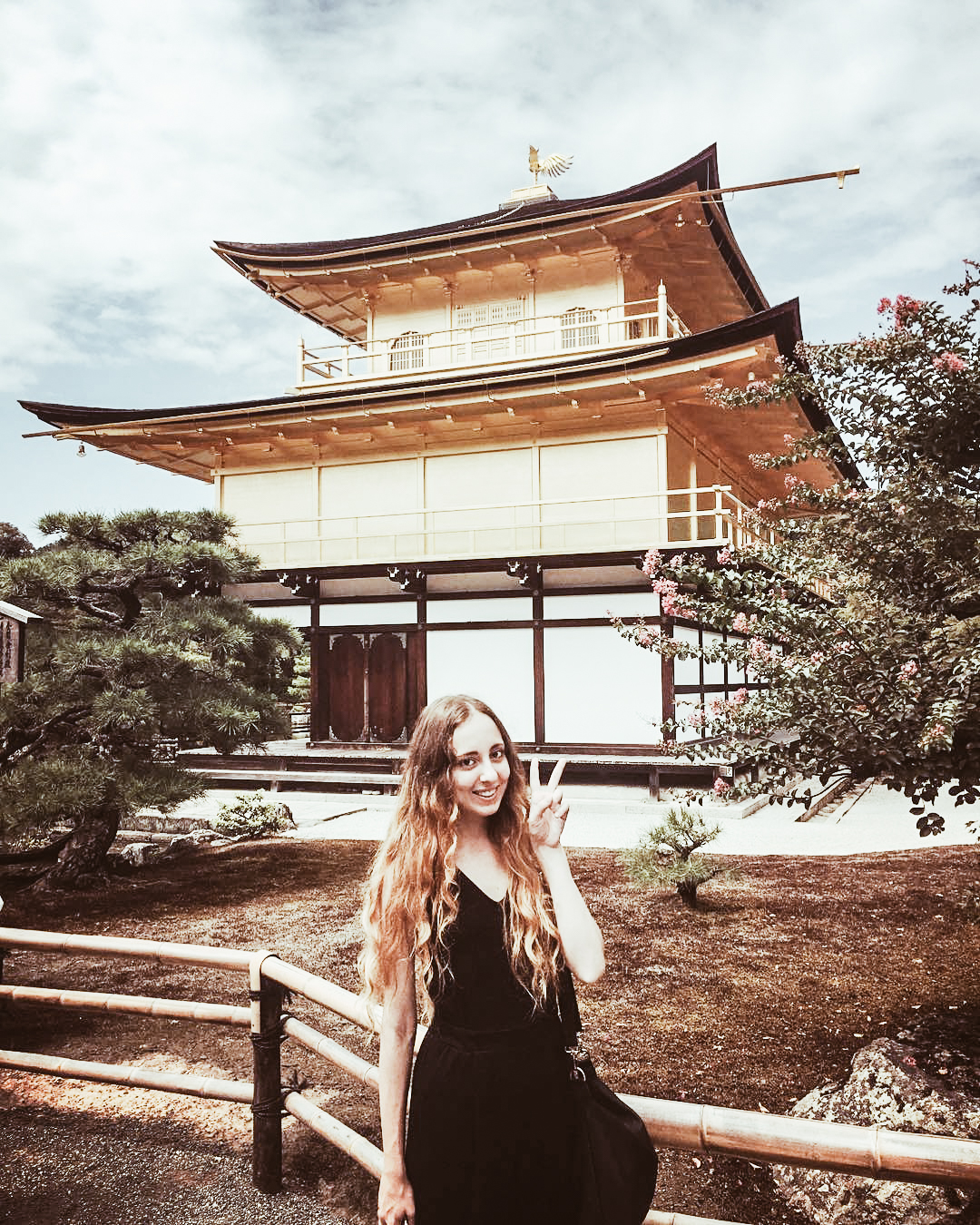

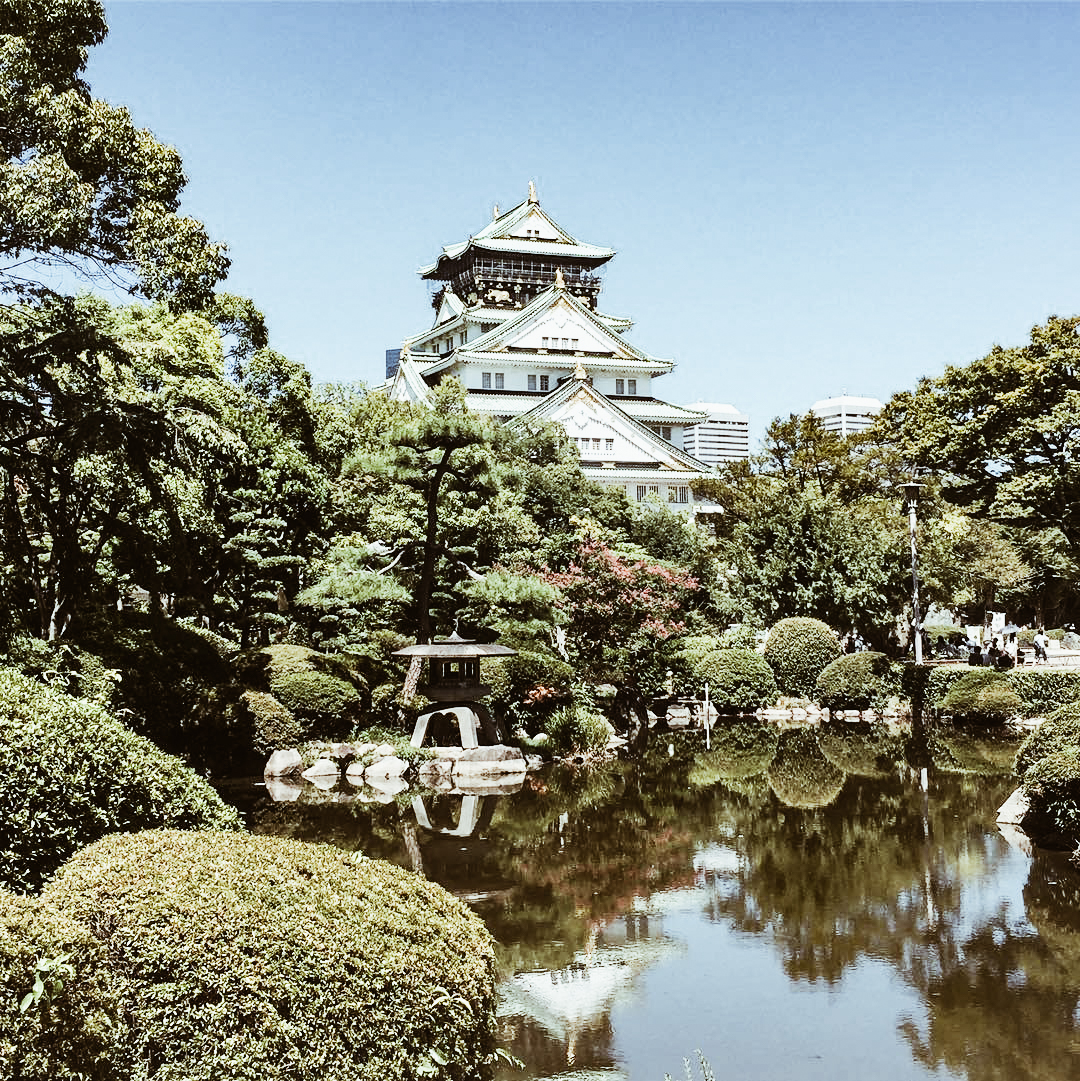
JIB: Tell us about one of the funniest experiences that have happened to you since you lived in Japan.
Saracchan: Japan has offered me and still offers me many wonderful experiences! Perhaps the first experience that comes to mind, linked to my initial year in Japan, was when a dear Japanese friend of mine invited me to spend New Year's Eve in the home of her grandparents in the countryside, with all her family. We cooked soba together, ate traditional Japanese food, put on the kimono and, at the stroke of midnight, drank hot sake in front of the bonfire, exchanging greetings for the new year. It was a truly unforgettable experience!
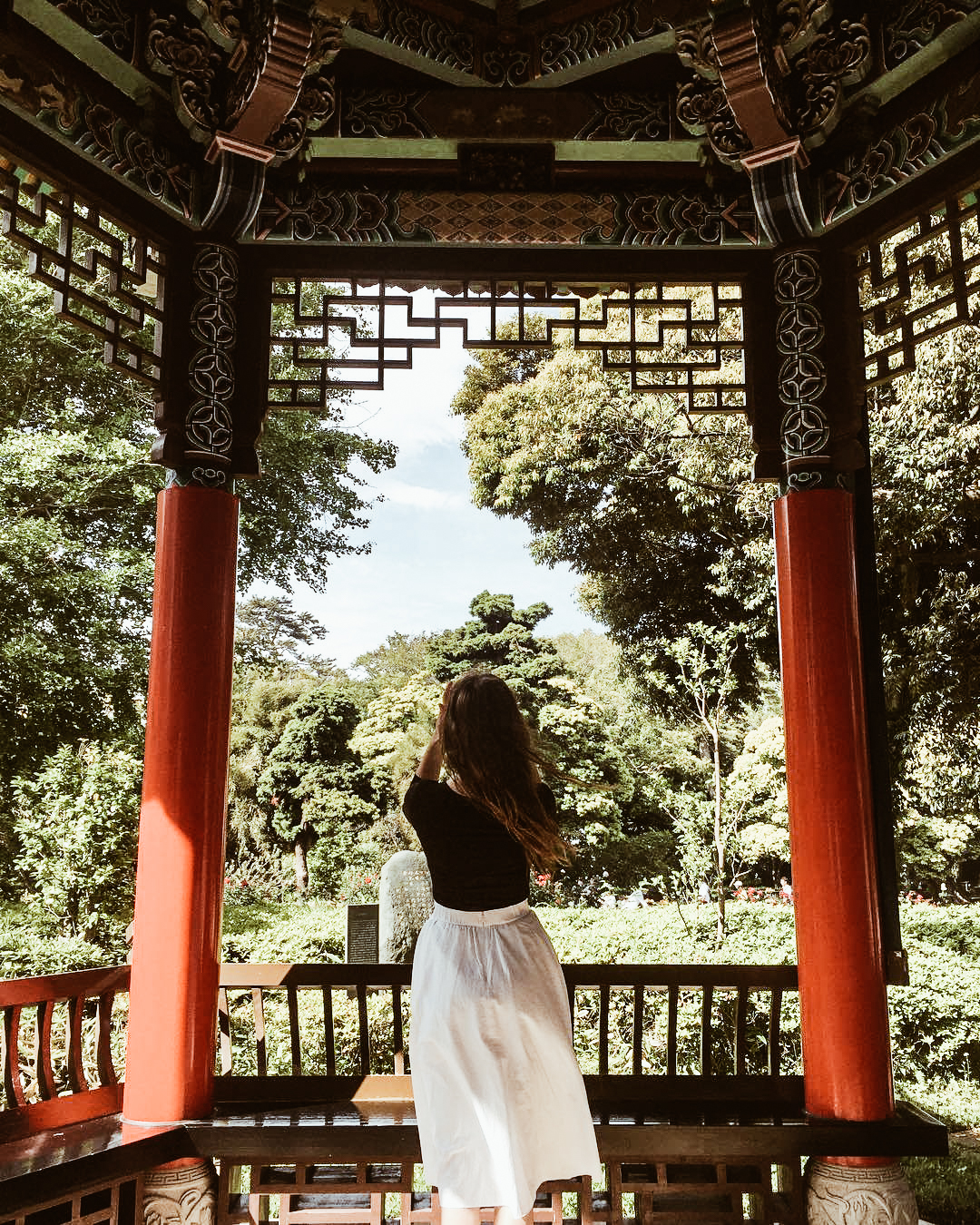
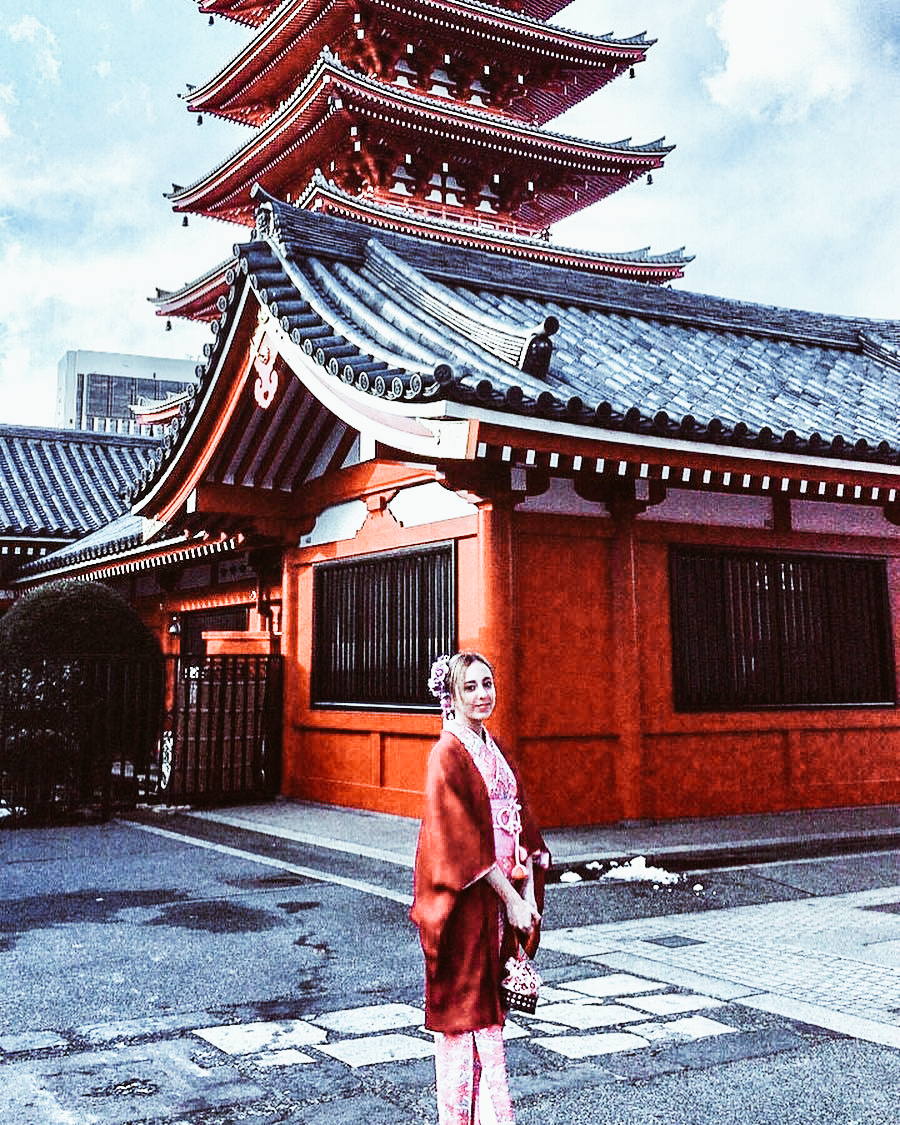
JIB: As a westerner, what are the difficulties and differences that you encountered in the early days in Japan?
Saracchan: Definitely the language! When I moved I knew how to say just a few simple sentences and, not knowing anyone yet, I had to do everything myself, from shopping to paperwork. Not to mention the millions of kanji that I saw every day and that made absolutely no sense to me. Furthermore, it was very difficult to orient myself with the numerous and very crowded subway lines, but they are all things that I have faced with determination and great curiosity.
JIB: In our opinion, Italy and Japan have a lot in common, tell us a little bit about your point of view on this topic.
Saracchan: I think Japan is a "western" country in Asia, in many aspects very close to our culture and way of thinking. However, I think it would be more correct to list the differences between the two countries since they differ on some important features of daily life. For example, Japan is different in the culture of work, the punctuality of trains, safety on the streets, the way of living relationships and so on. Japanese society is more focused on the common good, while Italian society, in my opinion, is more individualistic.
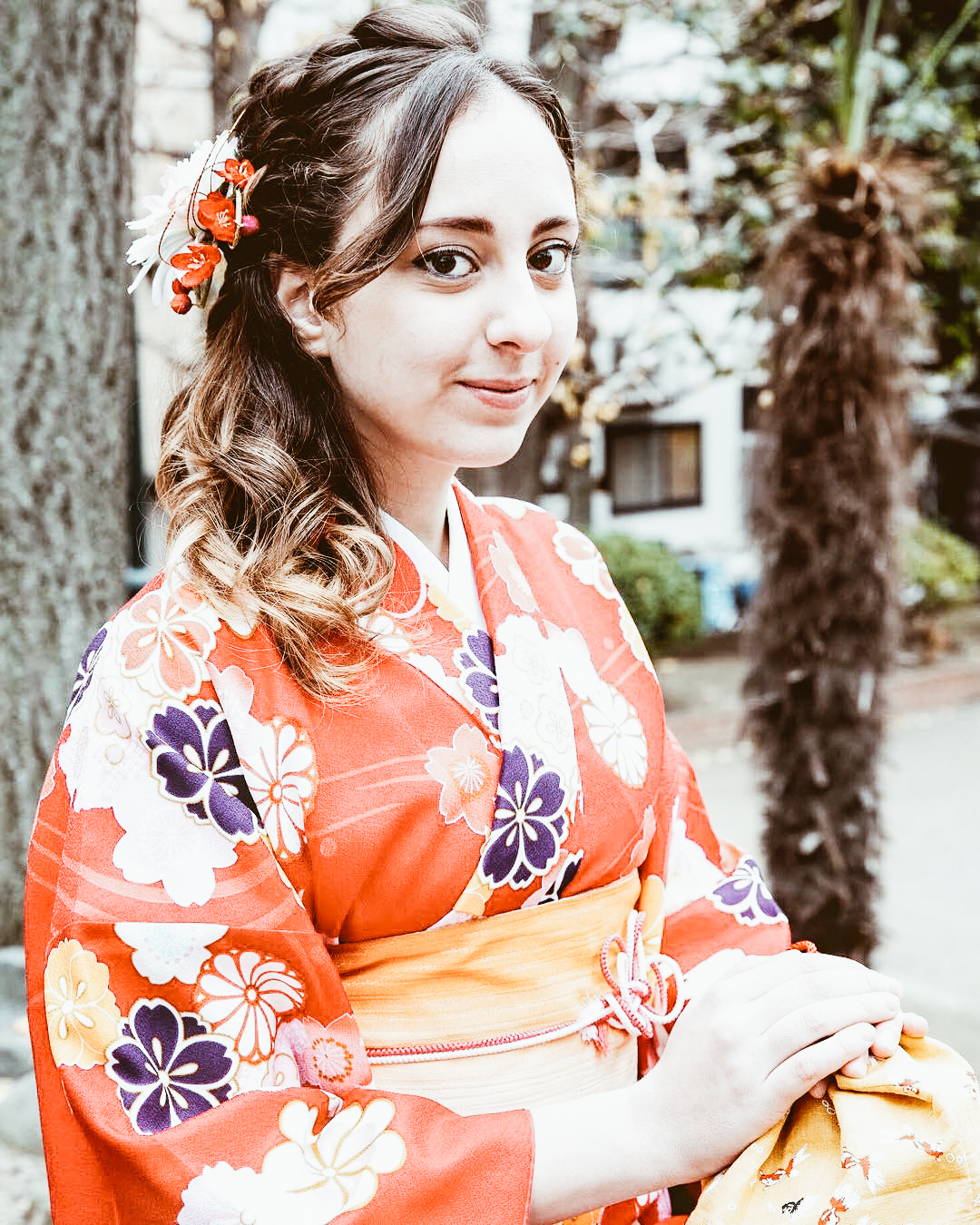
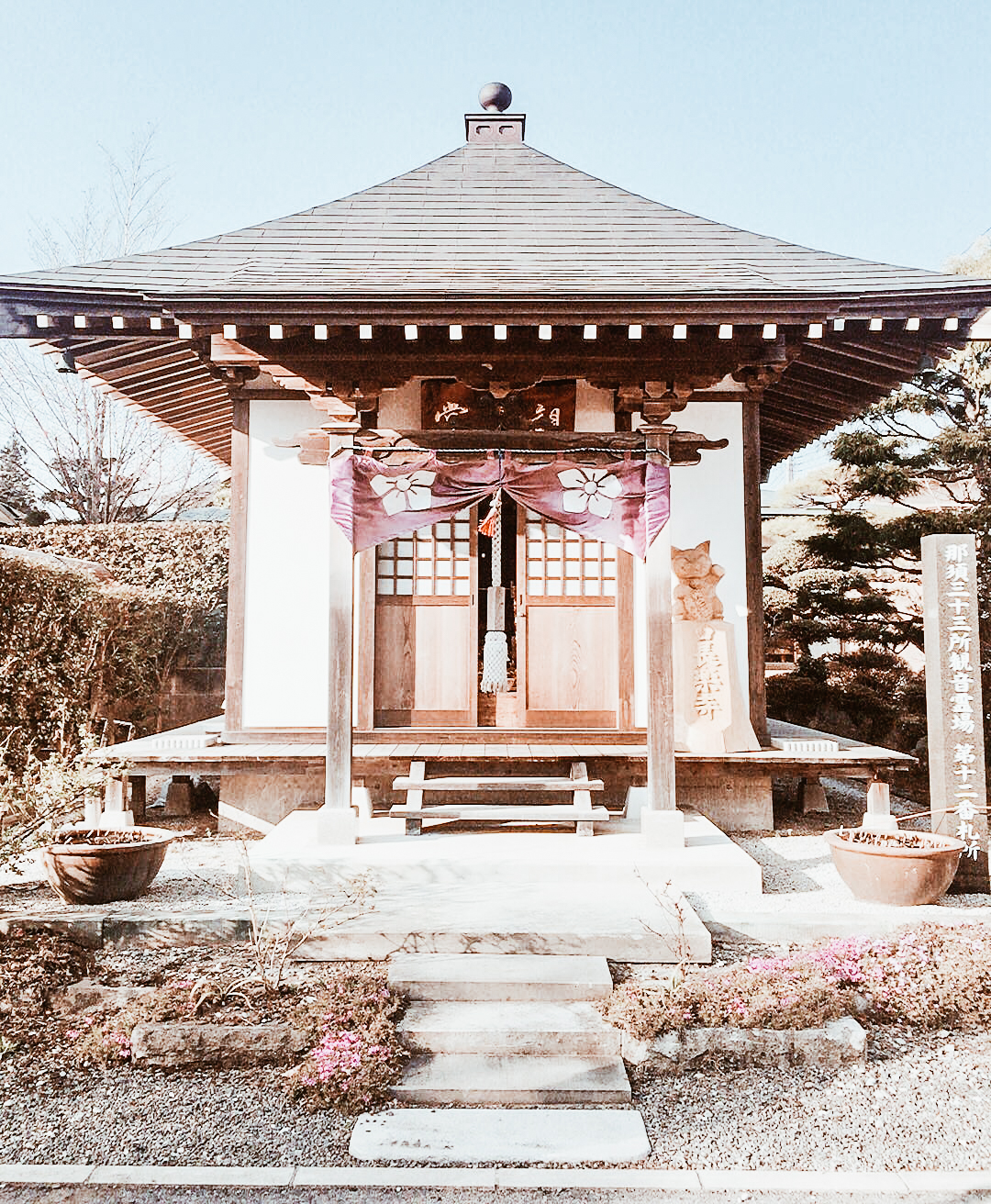
JIB: Which city captured your heart in Japan?
Saracchan: Tokyo! It is a city that has everything, nothing is really missing. It is very modern, with very high skyscrapers, but at the same time ancient, with its hidden temples scattered around the city and the silent and characteristic lanes that transport you to another world. There are many activities to do, many places to visit, it's immense! Spectacular gardens, an imperial palace, karaoke, Harajuku with its colorful shops, particular and unique cafes, izakaya and much more. It never ceases to amaze you and every day you can discover new things and meet interesting people. In addition, it is in a very convenient location, a few minutes from other characteristic cities such as Yokohama, Enoshima and Kamakura. I would say that it is perfect for me, also because, contrary to what one might think, it is not polluted and there are not many cars.
JIB: Which Japanese city looks more like Italy?
Saracchan: As for the urban landscape, I'd say the modern center of Kyoto. There the buildings are quite low and it is much less chaotic than in Tokyo. Instead, for the "human" aspect, I think Osaka is the city that comes closest to Italy, as the Japanese who live there are more sociable and open to others. In my opinion, in Osaka it is easier to meet people and make new friends.
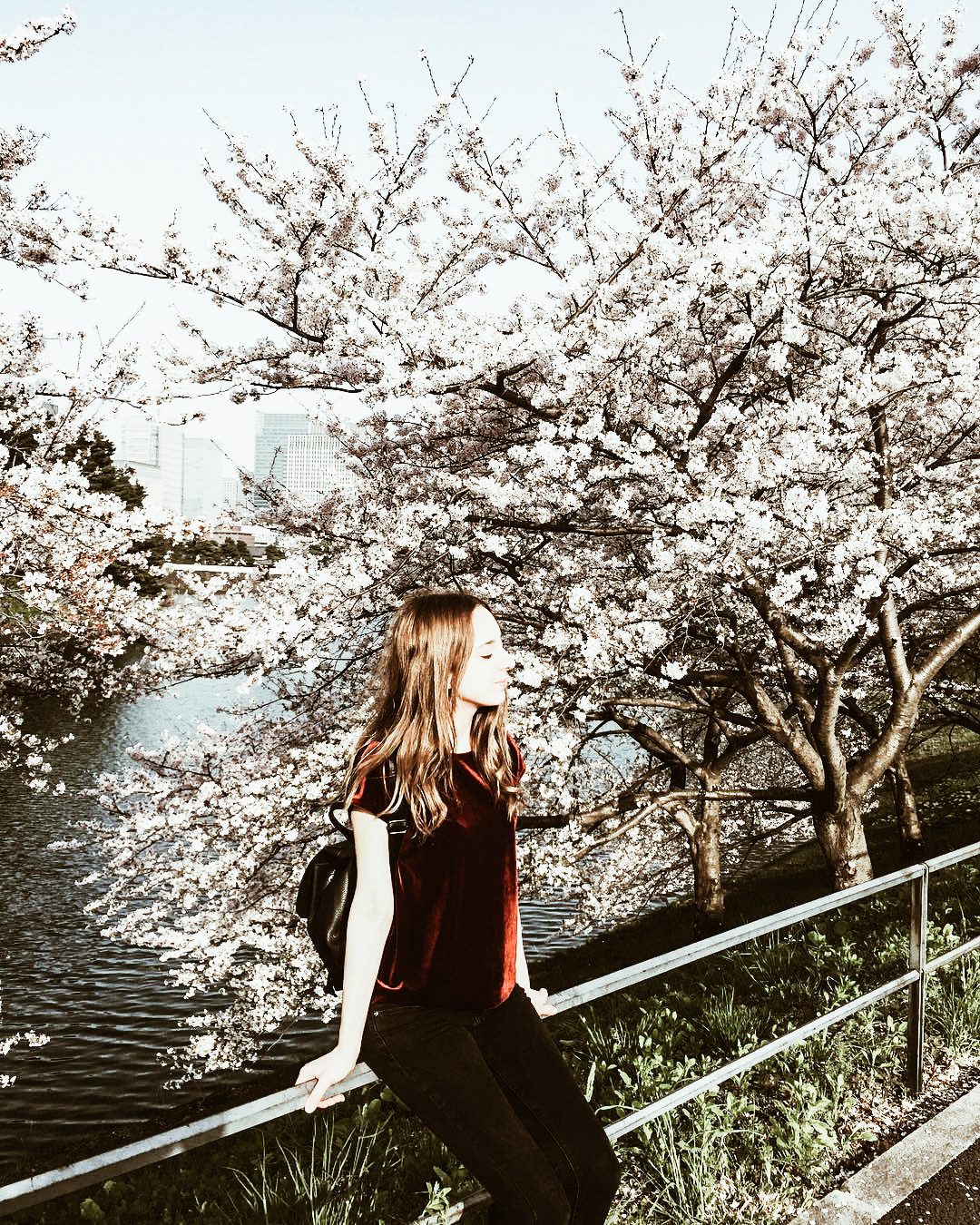


JIB: Cherry blossom, tell us a little about the point of view of a westerner who lived it
Saracchan: This is my favorite event ever! All the streets turn pink and come alive with visitors taking hundreds of photos. Usually, the Japanese gather in the parks with friends and family, they lay large blue sheets on the lawn and spend the days picnicking and drinking sake. In addition, there are many matsuri, or festivals with stalls and street food that spread a very good perfume throughout the park. It is a unique experience, especially seeing the sakura in the evening, illuminated by colored lights that create splendid images. For those who go to Tokyo during this period, I highly recommend going along the Meguro river near the Imperial Palace, areas dotted with beautiful blooming sakura.
JIB: Do you think there is a future for an even closer collaboration between the two nations?
Saracchan: Absolutely yes! Lately, in Italy, Japan and its culture are catching on and there are more and more people interested in discovering this wonderful Asian country. At the same time, there are many Japanese who are developing a great interest in our beautiful country. In fact, Italian food and wine are very renowned and there are many restaurants specializing in Italian cuisine. Very often there are events that sponsor our country and I believe that in the future there will be closer collaborations, also given by the increase in Italians living in Japan.


JIB: Do you ever miss Italy? Are you thinking of coming back here?
Saracchan: Sometimes I miss it, especially my family, my friends and the food! Both nations have much to offer, each with its strengths and weaknesses. At the moment I am not sure what I will do after graduation, if I will live in Japan or return to Italy, but I know that I would like to have a job that allows me to live between the two countries, maybe something related to the tourism sector.
JIB: Say something and give an advice to all our readers
Saracchan: If you have come to read this final question, thank you very much and I hope to have sent you something or at least to have given you some suggestions that you can use in the future. As a last tip, I would tell you not to give up and to do your best to achieve your goals, whether it is to move to Japan, to study Japanese or even just to make a trip to the land of the Rising Sun. They are not unattainable goals, there is no need to be rich, just be determined and want it with all your heart. I, even with the help of my parents, worked hard to make my dream come true and I made it! You can do it too, don't be afraid to dare.
Follow Sara
Instagram: @saracchan
A hotel with cats? It just opened in Japan!
The Neko Hotel opens in Osaka
written by: Erika | Source: SoraNews24
Although we are all still stuck home, nobody forbids us to travel with the mind, so here is a brand new hotel where you can vacation with cats, the Neko Hotel in Osaka!

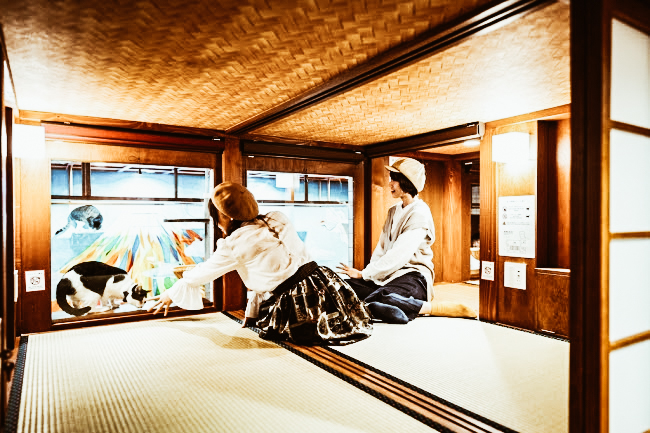

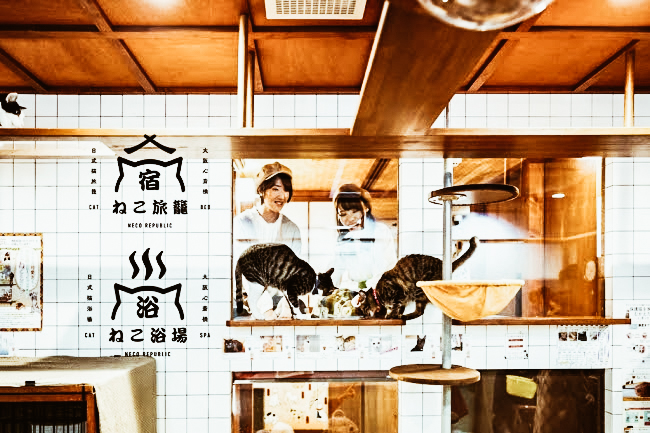
Forget about the sea view, now the "cat view" is what matters. As many of you know, in Japan there are the famous capsule hotels, very small rooms in excellent but low-priced locations. They call them capsule hotels because they are only a place to sleep with a shared bathroom/shower and nothing else. However, since last December, there is a brand new capsule hotel that offers extra comfort: cats!
Neko Yokujo & Neko Hatago, this is the name of the space that houses a small cafe and a neko hotel in Osaka. The buildings are divided in two parts with the cat cafe on one side and the hotel on the other. The floors are structured so that the area where the cats play is directly adjacent to the back of the guests' sleeping area. However, instead of having a solid wall that closes the view, the back of the night compartment is actually made of glass. In this way, a window is created that gives all the people who stay in this hotel a beautiful view of the cats.
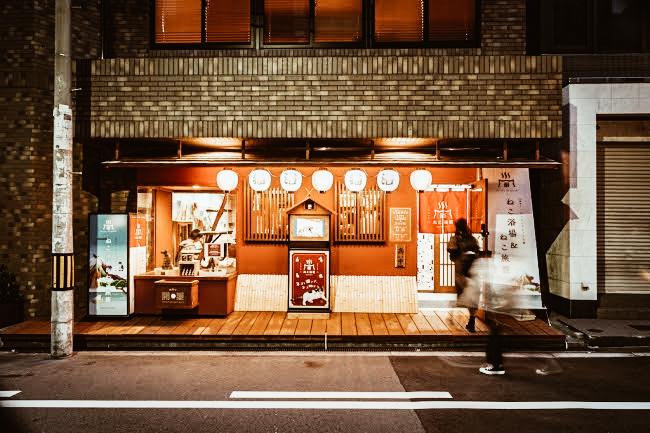



If you are wondering about your privacy, don't worry because each guest will be able to use curtains to isolate themselves if they wish to. In addition, the windows are placed so that one cannot look into the adjacent capsules. This way, you can keep the curtains open overnight, even after the cafe closes, so that you can observe the night adventures of the cats. In addition, the staff of the structure also offers special toys that can be controlled via radio in order to play with the cats beyond the glass.
Obviously, being able to observe cats only from a distance could become quite poignant. For this reason, the neko hotel offers all its guests a package that includes a two-hour voucher for the cat cafe worth ¥ 3000 with the possibility of accessing the cafe even before and after opening hours.
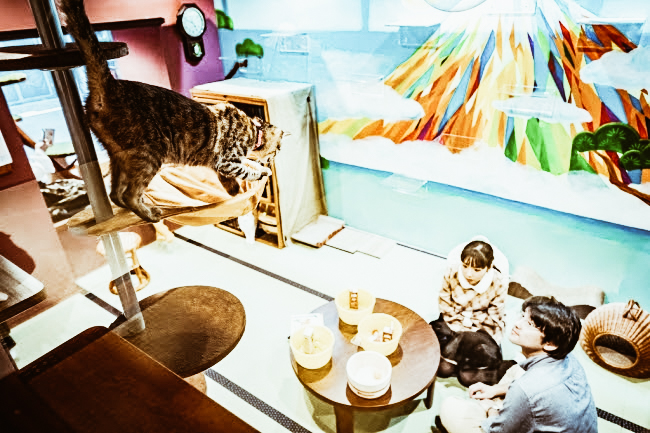
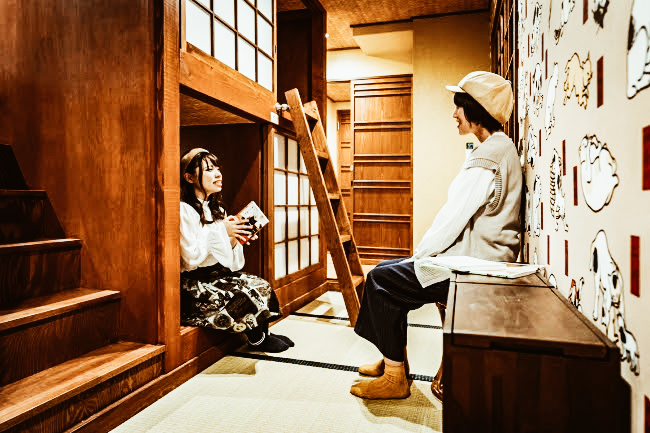
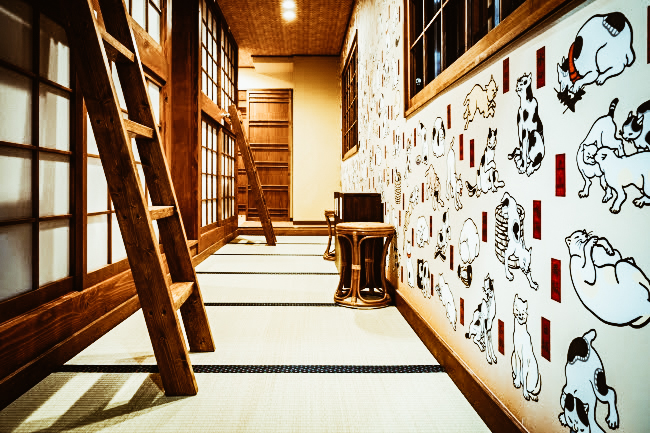
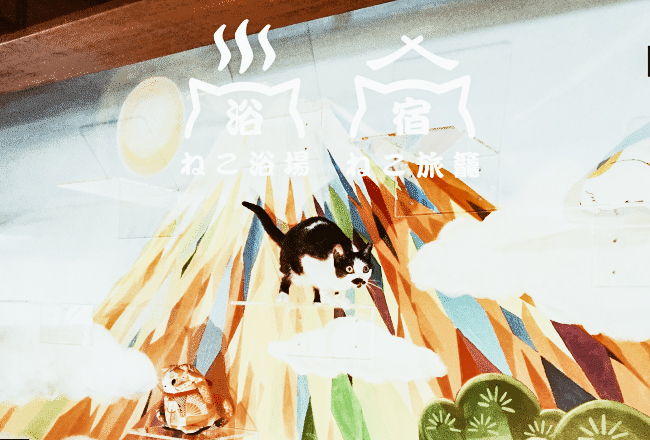
The design of the neko hotel is in typical Japanese style and obviously cats are a recurring theme. However, for anyone who falls in love with these feline friends easily, it may be difficult to say goodbye after just a few nights. In this case, don't worry, the Neko Hatago hotel is managed by the animal welfare company Neco Republic. In fact, all the cats you find in this hotel are felines saved from the street and always looking for a new home. Both the café and the hotel encourage guests to consider the stay as a test period to see if their personality fits well with that of one of the cats, in the hope of encouraging their adoption.
Don't you find it a beautiful idea? It would be great to be able to replicate it also in other parts of the world and we would love to hear your comments about it!
Information
Neko Yokujo & Neko Hatago / 猫浴場&猫旅籠
Address: Osaka-shi, Chuo-ku, Shimanouchi 1-14-29
大阪市中央区島之内1丁目14
Official Website | Facebook | Instagram
Things to do during Quarantine: Watching the Kabuki Theater
Kabuki theater classics available for free online
written by: Erika | Source: SoraNews24
The coronavirus pandemic and lockdown continue all over the world, but today we share with you the classics of Kabuki theater available online to spend time in quarantine.
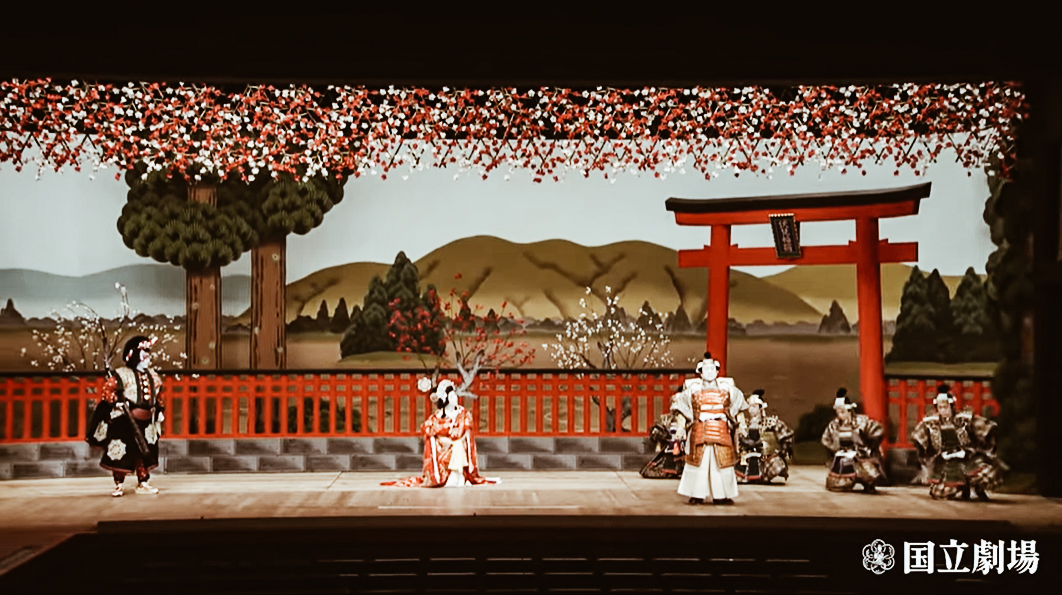
The Origins
For those who do not know what we are talking about, the term kabuki (歌舞伎) indicates a type of theatrical representation that arose in Japan at the beginning of the seventeenth century.
The origins of this theatrical form are traced back to 1603 and refer to dances performed, on the banks of the Kamo river in Kyōto. The word Kabuki is made up of three ideograms: 歌 ka (song), 舞 bu (dance), 伎 ki (ability). The ideograms chosen to form the name are the phonetic equivalent of the word kabuki, derived from the verb kabuku ("to be out of the ordinary"). This indicated the appearance and clothing in vogue at the time of Toyotomi Hideyoshi and characteristic of the so-called kabukimono.
Originally, the Kabuki theater was interpreted only by women, however, following the prohibition on grounds of morals, it was passed to a male only interpretation also for the female parts. The actors specialized in female roles are called onnagata. This theatrical tradition enchanted the emerging bourgeois class of the city and consequently became very popular. The novelty of these works consisted in the representation of facts, usually dramatic, that really happened. In fact, often very little time passed between the event and the performance, constituting a real means of mass communication.
The structure
The structure of Kabuki is very different from the scheme of western theater and the works never deal with general issues, existential questions or philosophical reflections. So there are no Shakespearean monologues or considerations of the protagonists on political issues. With a very fragile story and characters, the works are often written by several hands.
Also for this type of theatrical form, the principle of not assigning preponderance to verbal communication, in opposition to western culture, applies. In fact, for a long time, it was hard for us westerners to be able to read difficult and subtle situations. The events expressed through the emotions of the individual characters always prevail over moral considerations, creating a strong emotional tension.
5 hours of Kabuki theater online
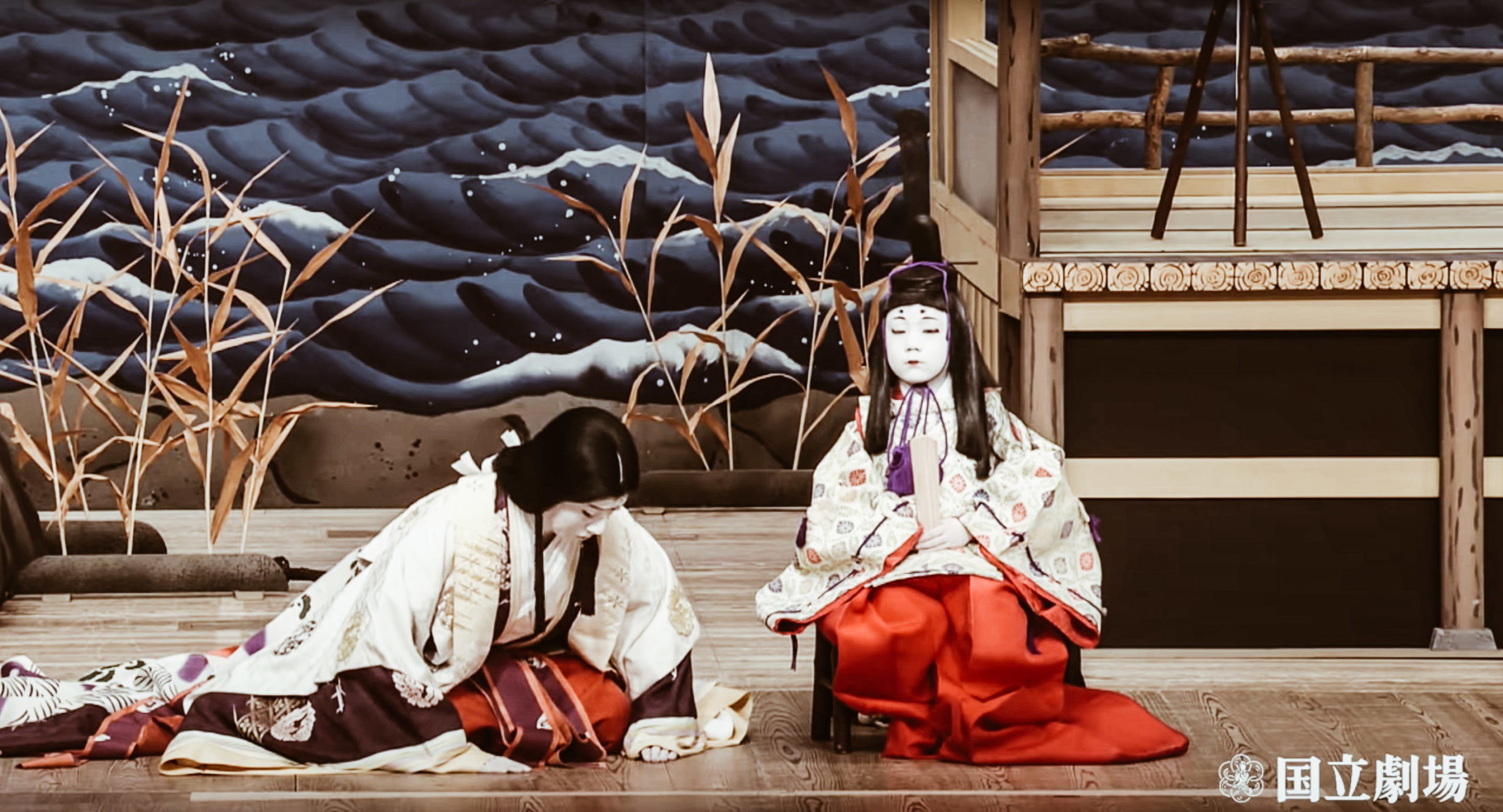
In contrast to the Noh and Bunraku theater, the Kabuki theater has worldwide resonance especially for the traditional and exaggerated facial makeup together with the dramatic costumes. Most of these performances take place in important places, so to attend a Kabuki opera you have to be in the right place, at the right time and an economic possibility at your disposal. In fact, some performances such a niche that they can only run for one time. Furthermore, if we add the closure of the theaters we can understand how the problems arise for this type of art.
After the cancellation of Yoshitsune Senbon Zakura (Yoshitsune and the Thousand Cherry Trees), a performance scheduled for March 3, Japan's National Theater took the opportunity to create something even more special. In fact, the performance with no audience will be published on the theater's Youtube channel. Divided into three videos, the theatrical performance is available for viewing until April 30 at 15:00 JST.
Yoshitsune Senbon Zakura
Yoshitsune Senbon Zakura has five acts and would usually take two days to perform in its entirety. As such, these videos portray the story in separate stages. Performance A covers the parts "Torii Mae", "Tokaiya" and "Daimotsu-Ura" of the work, the performance B includes the portions "Kokingo Uchijinishi", "Shiinoki" and " Sushiya ". Also, performance C manages the "Michiyuki Hatsune Tabi" and "Kawatsura Hogen Yakata" for a total of five hours of entertainment.
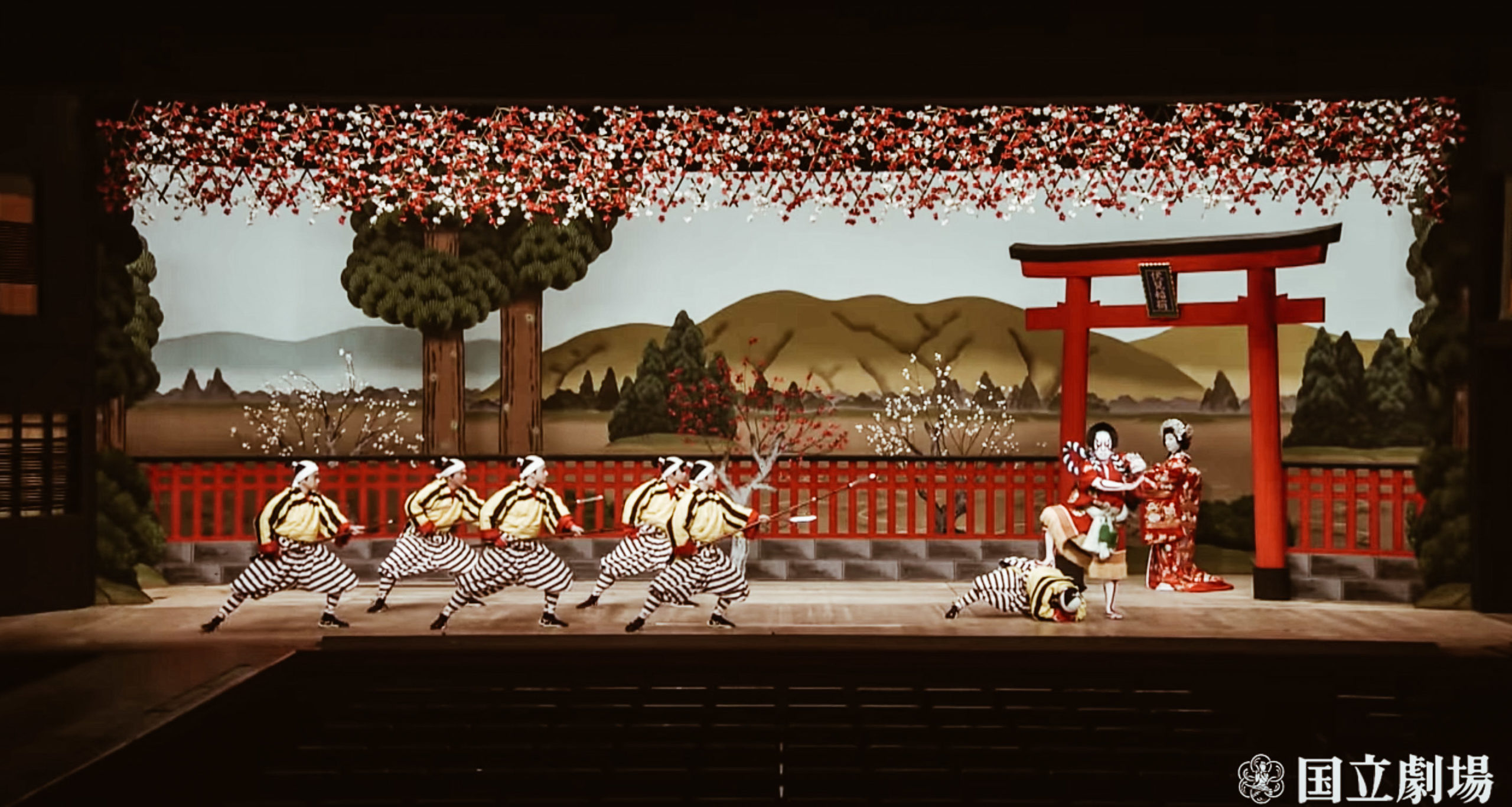
Although this is one of the most famous ancient epic operas, Kabuki theater can also be enjoyed with limited or absent Japanese language skills. Indeed, costumes, performances, and atmospheric music help to provide a broad context. In addition, Yoshitsune Senbon Zakura is one of the three most famous Kabuki shows, so the material for finding your way through the story is also available to foreigners.
To watch all the performances, check out Japan's National Theater YouTube channel.
Travel guide: Tokyo - Episode 06 - the Shinkansen of the future
Tokyo – Osaka in one hour with the Shinkansen of the future
written by: Sara | translation: Erika | source: TimeOut Tokyo
We continue with our practical guides about Tokyo and today we talk about the Japanese railway system, one of the most efficient in the world, and the jewel of this system: the shinkansen.
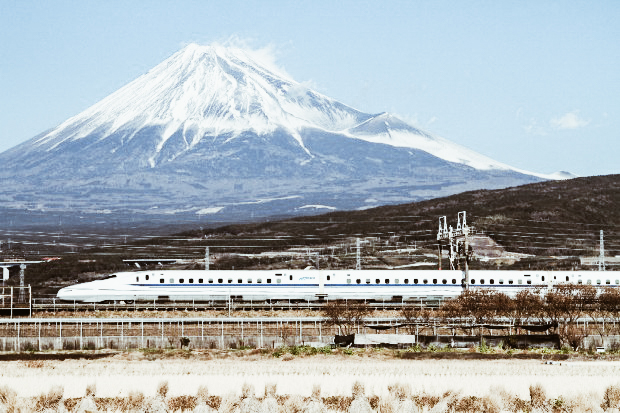
photo credits: repubblica.it
An integral and characteristic part of Japanese infrastructure, the shinkansen (新幹線) are the famous “bullet trains”. They travel very fast up to 320 km / h, to take us from one city to another in no time.
The Shinkansen lines
Currently, there are 15 known lines that allow us to travel to different destinations in Japan. From Tokyo towards the south we have the Tokaido Shinkansen line, which connects the capital with Osaka. The Sanyo Shinkansen line connects Osaka to Fukuoka, while the Kyushu Shinkansen line from Fukuoka crosses the island of Kyushu from north to south. Shinkansen Akita, Hokkaido, Hokuriku, Joetsu, Tohoku and Yamagata also depart from Tokyo.
The challenge of the Rising Sun is always constant: to offer safety and maximum efficiency.
In 2015, Japan Railways Group (JR) managed to break the world speed rail record with the magnetic levitation train that reached 603 km/h. From here, the company developed a program to maintain this impressive record, something we could define futuristic. We are talking about the Tokyo-Nagoya-Osaka section. This new initiative is called the Linear Project and is expected to be completed in 2037.

photo credits: business-standard.com
The trains of the future
Japan Railways has always been committed to implementing ultra-modern trains. In fact, the company is now focusing on building a linear Shinkansen capable of traveling with magnetic levitation. This type of technology would have retractable wheels that do not touch the tracks making the train elegantly “slide” without any friction. This futuristic shinkansen would travel at a top speed of 500 km/h, taking us from Tokyo to Nagoya in 40 minutes and from Tokyo to Osaka in 67 minutes.

photo credits: agatetravel.com
Obviously, this project requires a new infrastructure that allows a connection from Tokyo to Nagoya situated for the most part underground. In fact, this would avoid areas prone to strong earthquake shocks. With costs that would be around 50 and a half billion, the first part of the route could already be completed in 2027. So, we just have to wait and follow developments.
What do you think of traveling at high speed? These futuristic trains are now part of our reality and the shinkansen has an incredible charm: have you had the opportunity to try it? Tell us about your experiences!
Travel guide: Tokyo - Episode 05 - Rent in Tokyo
Cheapest Apartment rent in Tokyo
written by: Sara | translation: Erika | source: Soranews24
We continue with our practical guides about Tokyo with a focus on the cheapest apartments ret that can be found in the city.
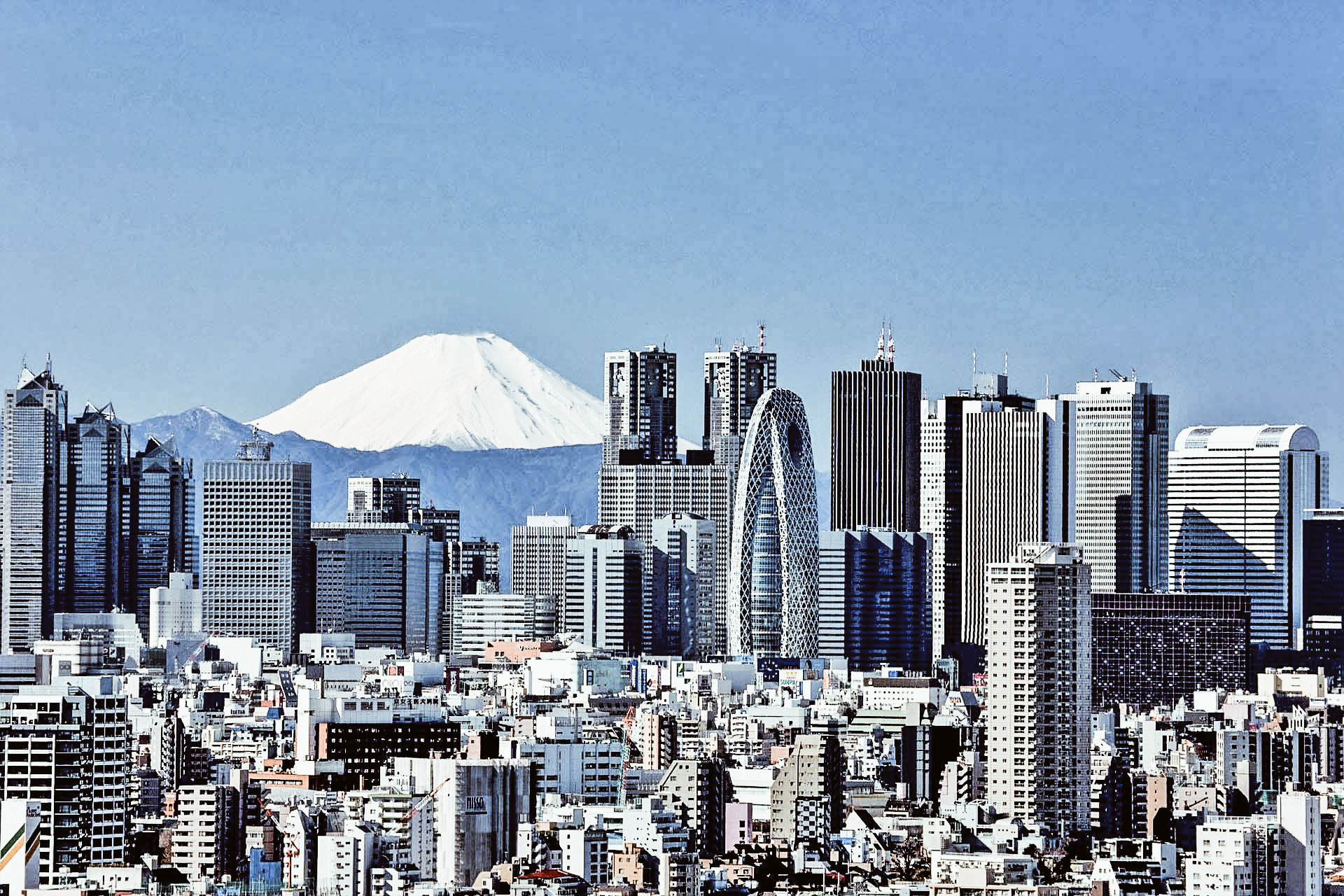
photo credits: tgcom24
How many times did we think “What if I went abroad to look for new opportunities?” and at the same time the fear of the prohibitive prices of the apartments kept us from realizing this intention?
Today pursuing this dream is possible! If you are thinking of Tokyo as a destination, you should know that there is nothing prohibitive. Small apartments at affordable monthly prices will allow you to start a new life in this wonderful megalopolis.

photo credits: facebook.com/suumo.jp
The Japanese real estate agency Suumo has published the result of a study demonstrating the convenience of rental rates of the great cities of the Rising Sun. Of course, the apartments taken into consideration are one-bedroom apartments between 10 and 40 square meters and are not located in the city center. In fact, as we know, in this area we find offices, commercial activities together with the most luxurious multi-story residences. However, thanks to the proximity to the stations or subways that allow you to move easily and reach any destination, also the external areas become important options to consider!

photo credits: Japanexperterna.se
The most convenient residential areas in Tokyo
The result of Suumo’s research was the following:
59,000 yen per month near Kasai Rinkai Koen Station (JR Keiyo Line). Akihabara, Tsukiji, Ginza or Roppongi can be reached in just 14 minutes by train from Tokyo station and with a one-way transfer to the Hibiya subway line.
60,000 yen per month near Kanamachi Station (JR Joban Line), from which you can reach Ueno and Keisei Kanamachi (Keisei Kanamachi Line).
62,000 yen per month near Kita Ayase Station (Tokyo Metro Chiyoda Line), which leads to Harajuku and Shinozaki Station (Toei Subway Shinjuku Line), which, as the name suggests, catapults us directly to Shinjuku.
63,000 yen per month near Funabori Station (Toei Subway Shinjuku Line), Horikiri Shobuen Station (Keisei Main Line), Ichinoe Station (Toei Subway Shinjuku Line), Keisei Tateishi Station (Keisei Oshiage Line), Shibamata Station (Keisei Kanamachi Line) and Takenotsuka Station (Tobu Isesaki Line / Tobu Skytree Line).

photo credits: hansjohnson
Don’t you feel heartened? That feeling of being able to say, “then can I make my dream come true if I want?”. There is really nothing unattainable if we can seize the right opportunity.
Quaran, the official quarantine mascot of Japan
Quaran, the official quarantine mascot of Japan
written by: SaiKaiAngel | Source: TimeOut Tokyo
Meet Quaran, the official Japanese quarantine mascot! That's right, once again Japan has decided to give us an important message while maintaining a smile.
The whole world is going through a very difficult time, fighting against the Covid-19 pandemic. Right now, wherever companies, museums, schools, and even entire cities are closing, pushing people to take action with smart-working. All this will last until the end of this emergency.

And here comes Quaran, a mascot created by the Japanese Ministry of Health to make people understand the importance of staying at home and also remembering the safety distances. It is described as a small fairy with a Q on the forehead, a shield, and protective glasses. Take a look also at his back: with the Q shaped tail, the Q of Quaran, the Q of Quarantine. The description, as we said, speaks of a small fairy that reminds us how to avoid the virus by respecting the distances and avoid gatherings. However, when we meet it, we discover it's actually a life-size mascot! Where can this puppet be found most? At airports in Japan, but it is said to travel around the world to prevent illegal attitudes that could spread the Covid-19 virus, even more, protect us with its shield and common sense.
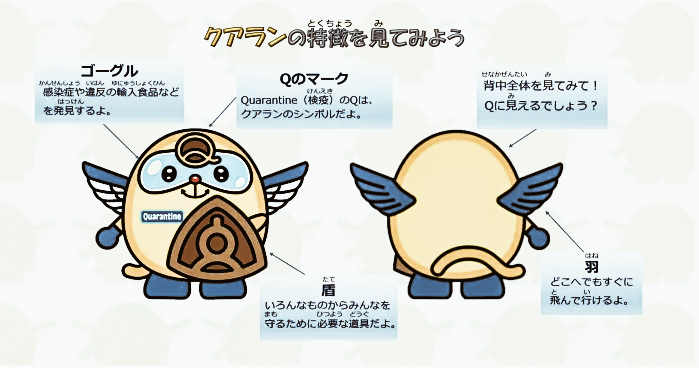
Quaran was also created to promote the work of the Quarantine Information Office, under the control of the Ministry of Health.
Not just this! Quaran even has it's own website, it deserves one very careful look. Stay safe, world! Quaran will help us live everything with responsibility, common sense, prevention, but always with a smile. A smile, we must never lose during this fight.
Source: TimeOut Tokyo | Photo credits: forth.go.jp







